

Our family recently had the opportunity to travel to Japan during Spring Break of 2023 with good friends and I thought I'd share our itinerary along with some observations, suggestions and tips if you ever find yourself planning a trip to Japan of your own! All the credit of planning this fabulous trip goes to our good friends Jeff and Maria Walter. The Pintos were grateful to be along for the ride and we loved it!
We took a nonstop flight from O'Hare to Haneda (Tokyo) Airport. Tokyo has 2 main airports, and Haneda (HNA) is more central in Tokyo, making it quicker to get into town after landing. Narita Airport is the other large airport but it is farther from Toyko central, but still accessible by train. The flight is approximately 13 hours, with a 14 hour time change (Japan is 14 hours ahead of US Central Time). No doubt, it feels like a time machine when you fly from Chicago to Japan. Our flight left on Thursday night at 5pm and we arrived Friday evening at 6pm. When we came home, we left on Sunday afternoon at 5:30 pm and arrived on Sunday at 3:30 pm. ANA (All Nippon Airways) had excellent service and the plane was our first exposure to some Japanese food and drink!
As of March 2023, Japan was requiring either a negative COVID test within 72 hours or proof of vaccination. We found the Visit Japan website to be very helpful to receive our QR code for COVID, immigration and custom requirements before departing the US. The Visit Japan website saved us a ton of time getting through customs and immigration. We also arrived with Japanese Yen in hand. There were some places that only accepted cash, but credit card was widely accepted.
After checking into our AirBnB in Shubuya we hit the ground running! We started our first day with an TripAdvisor tour of the Tsukiji Fish Market and Sushi Making Class. Experiencing the market with our guide was a great way to introduce our crew to the culture and food of Japan. We saw oysters as big as our hands, candied strawberries, pastry shaped fish filled with custard and many, many shops filled to the brim with tea bowls, tea towels, chopsticks and everything else you could ever imagine. Called 'Toyko's Kitchen' - the market has everything from sesame seeds, knives, soup broth and incredible seafood offerings. Wandering through the 3-4 blocks in Tsukiji Market is a must while you are in Tokyo.
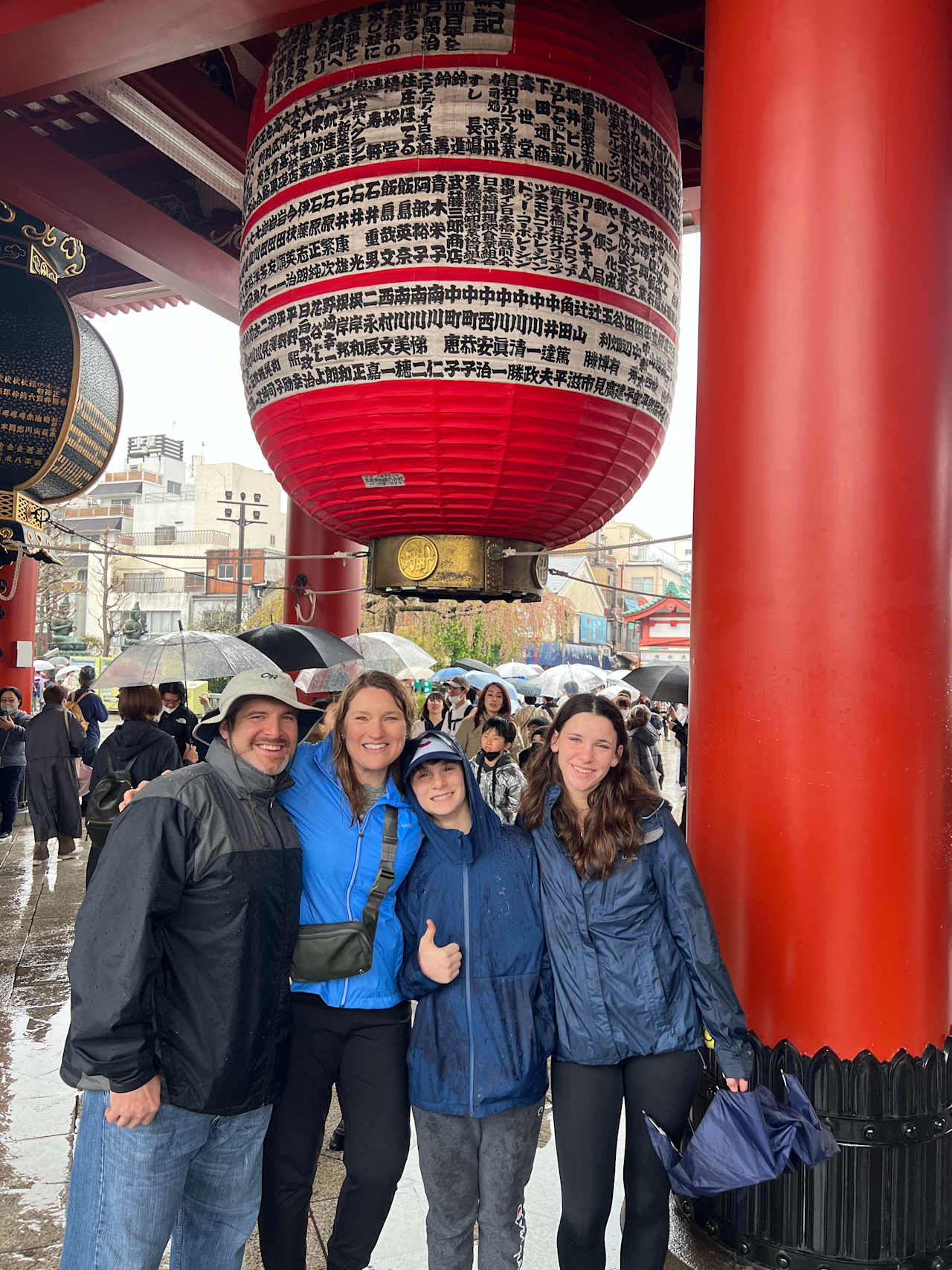
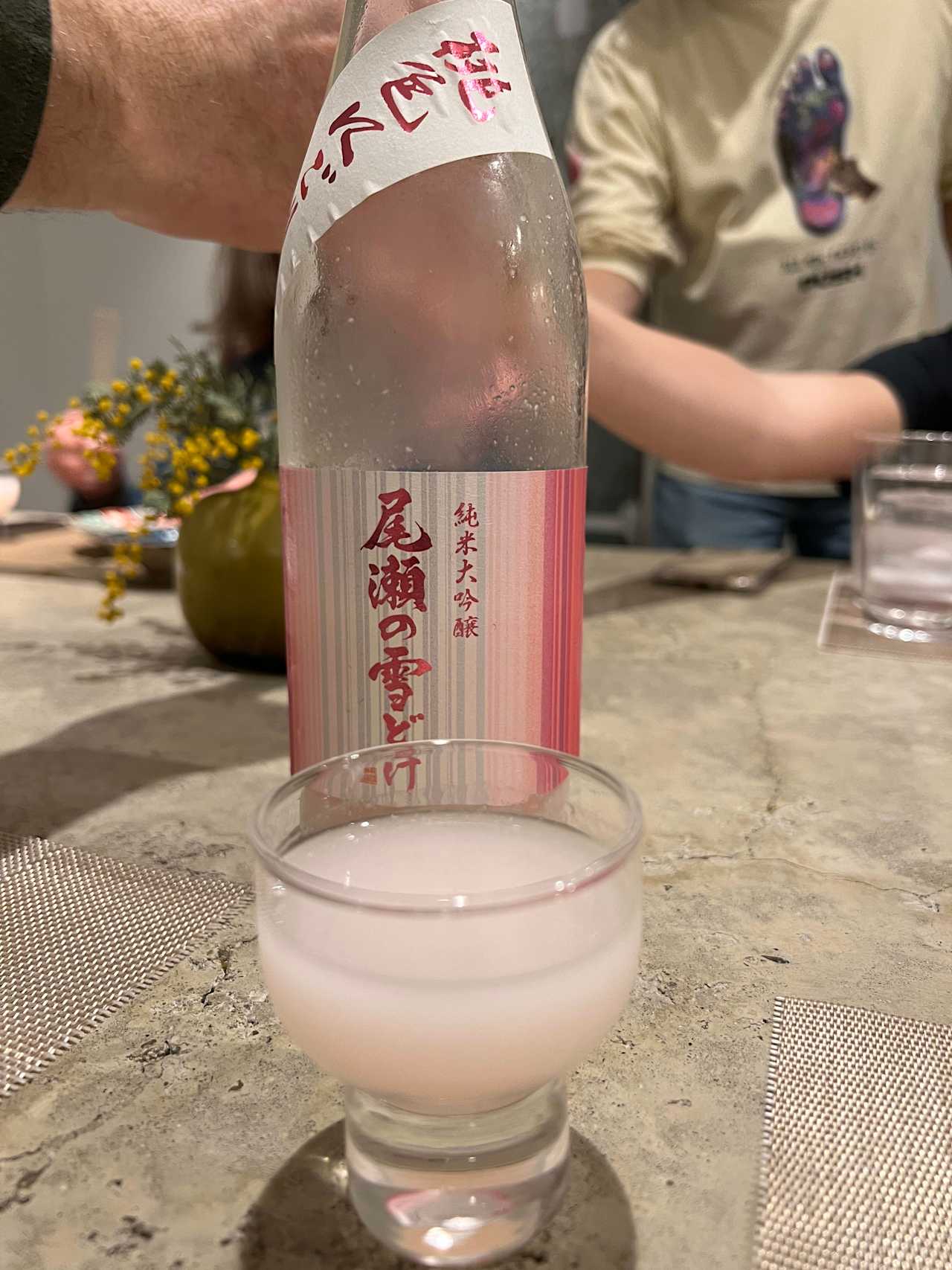
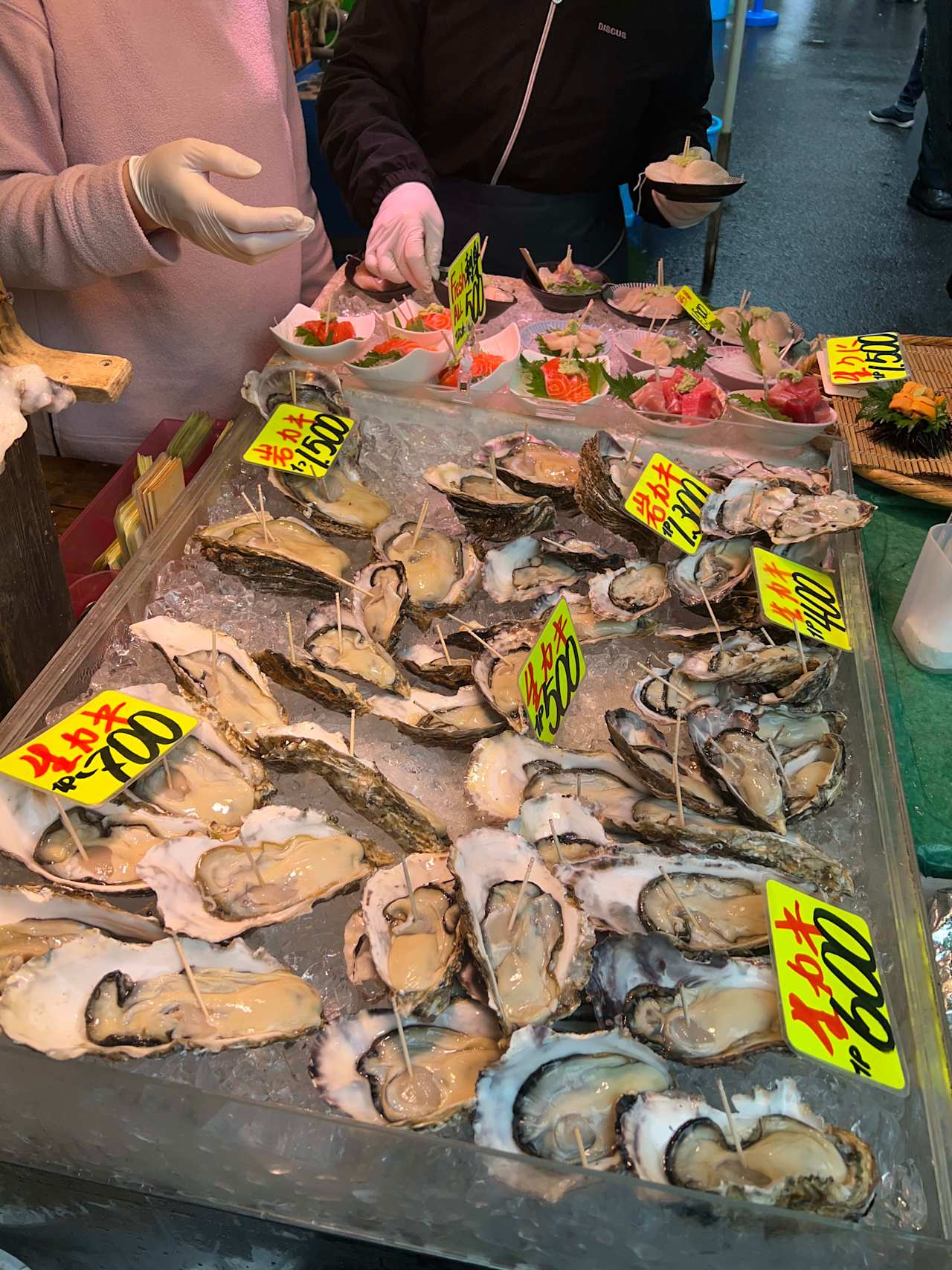
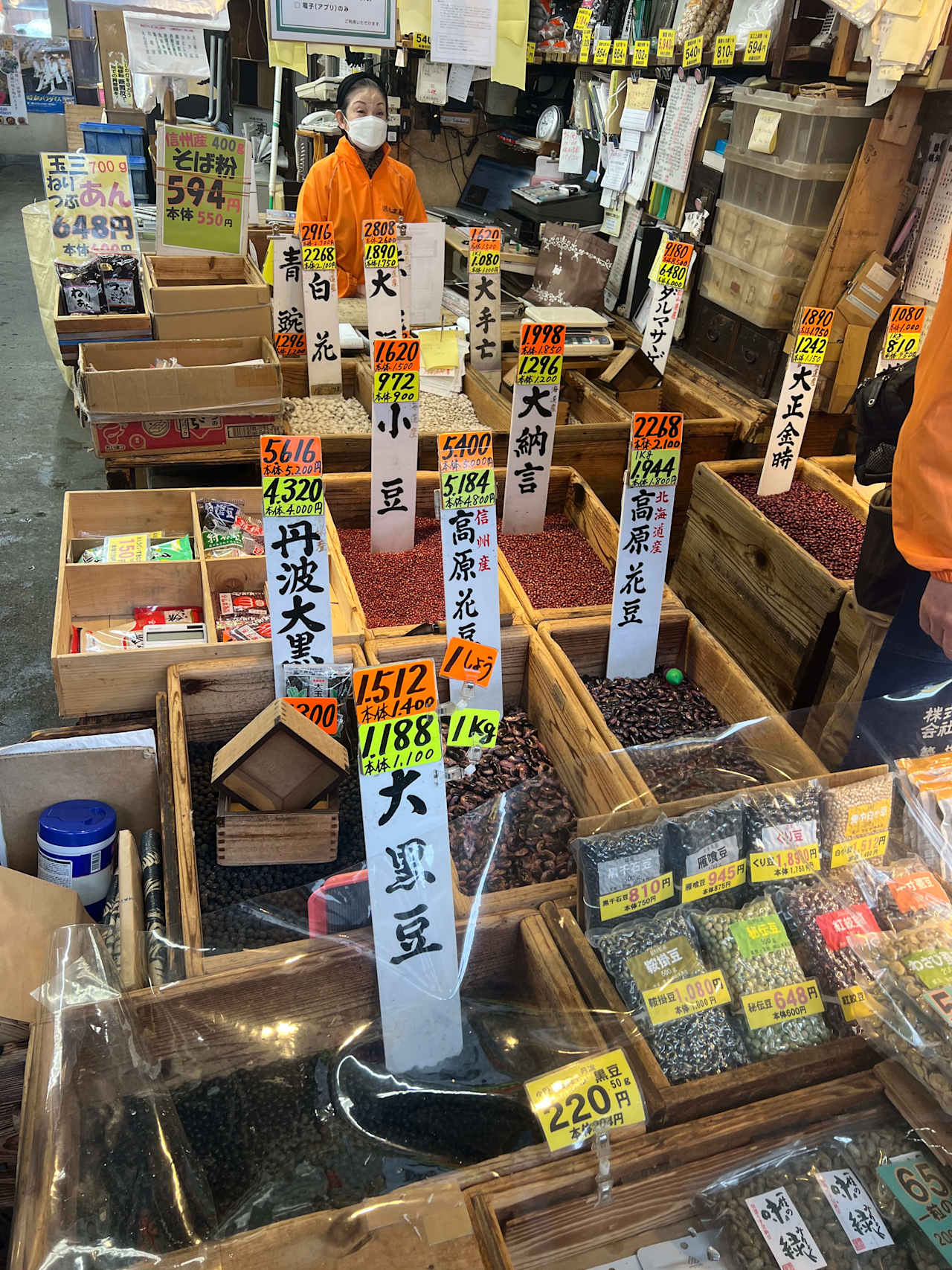
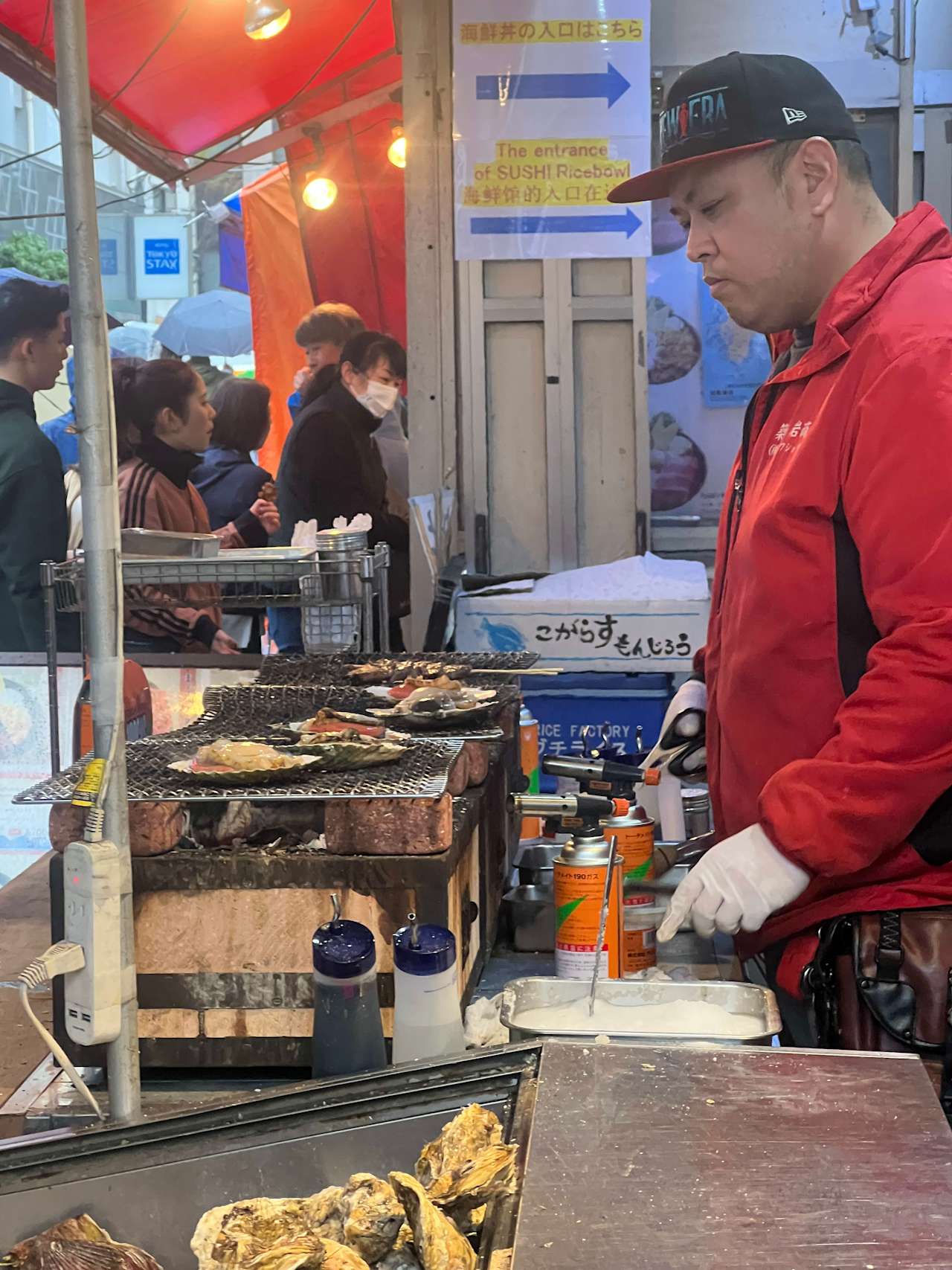
After the market we got to experience the extensive train system of Tokyo with our guide who thankfully helped us figure out the system! We took the train to a sushi restaurant and learned how to make sushi from a sushi master with over 40 years experience. It's harder than it looks to make those beautiful rolls but we did it!
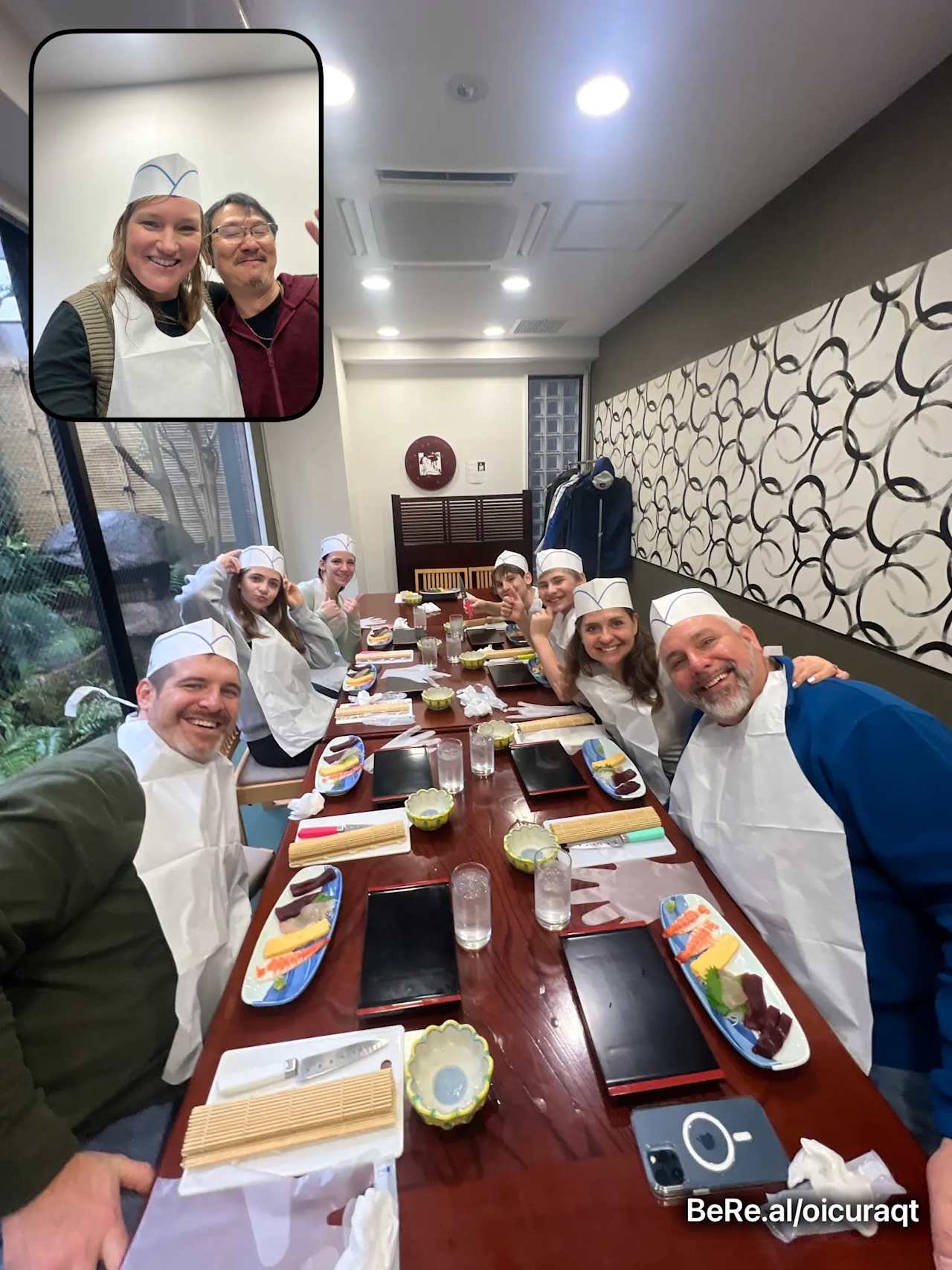
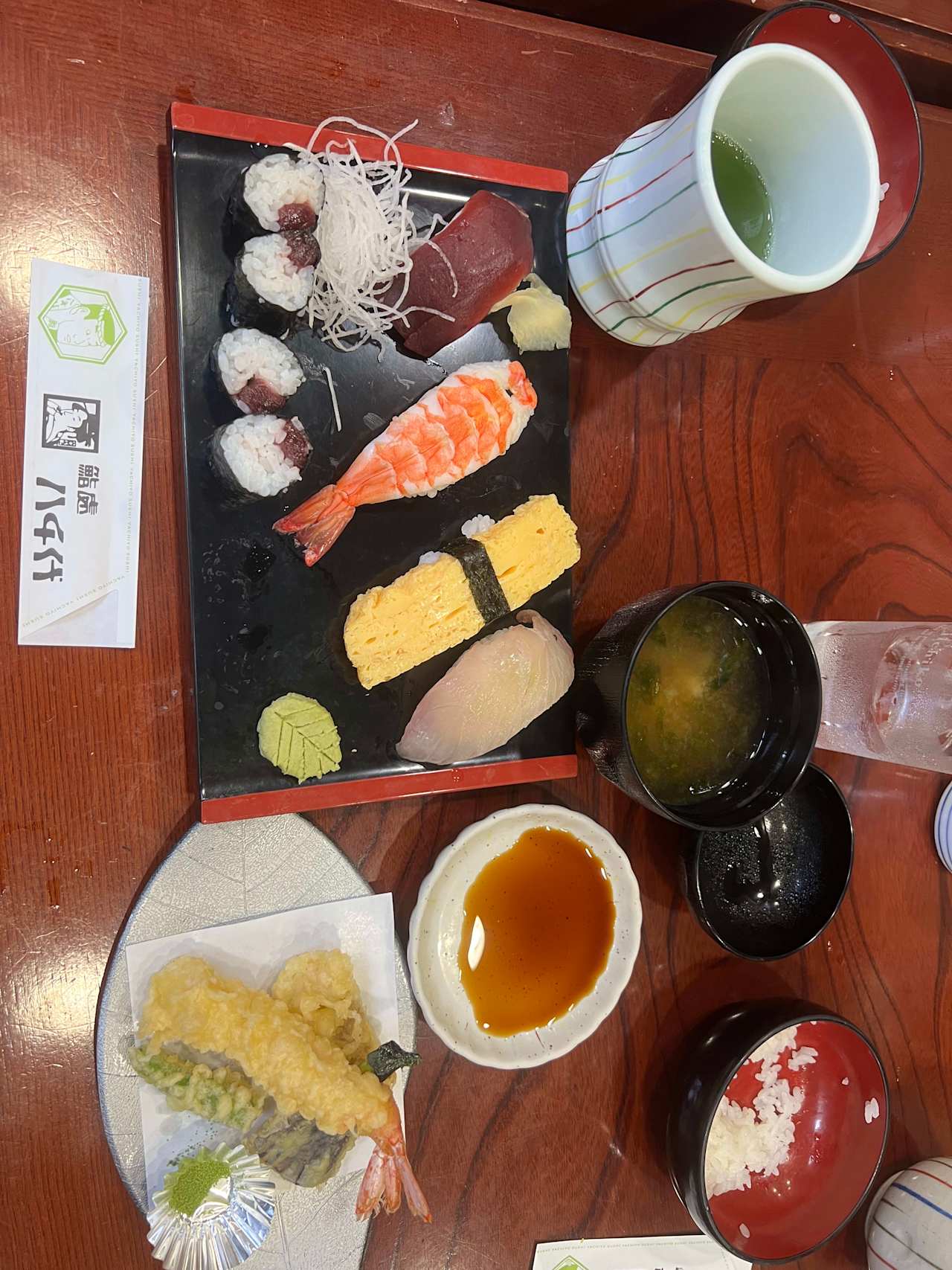
The next day we planned on going on this tour around the Mt Fuji area but our tour was cancelled due to low visibility. We quickly came up with a plan to check out a few local attractions including the Senso - ji Temple and the Meiji Jingu Temples. Senso - ji Temple is impressive in the middle of town with souvenir shops leading up to the temple. It’s very crowded but worth the trip. Meiji Jingu was more peaceful as it is a forest in the middle of Toyko and it reminded us of Central Park in New York City. We also had some of the best ramen we had on the trip! It was cold and rainy and this piping hot bowl of ramen fit the bill. We also found a cat cafe and the kids were in heaven. A cat cafe is exactly what you would imagine it to be: you pay an entrance fee, buy a coffee and pet cats.
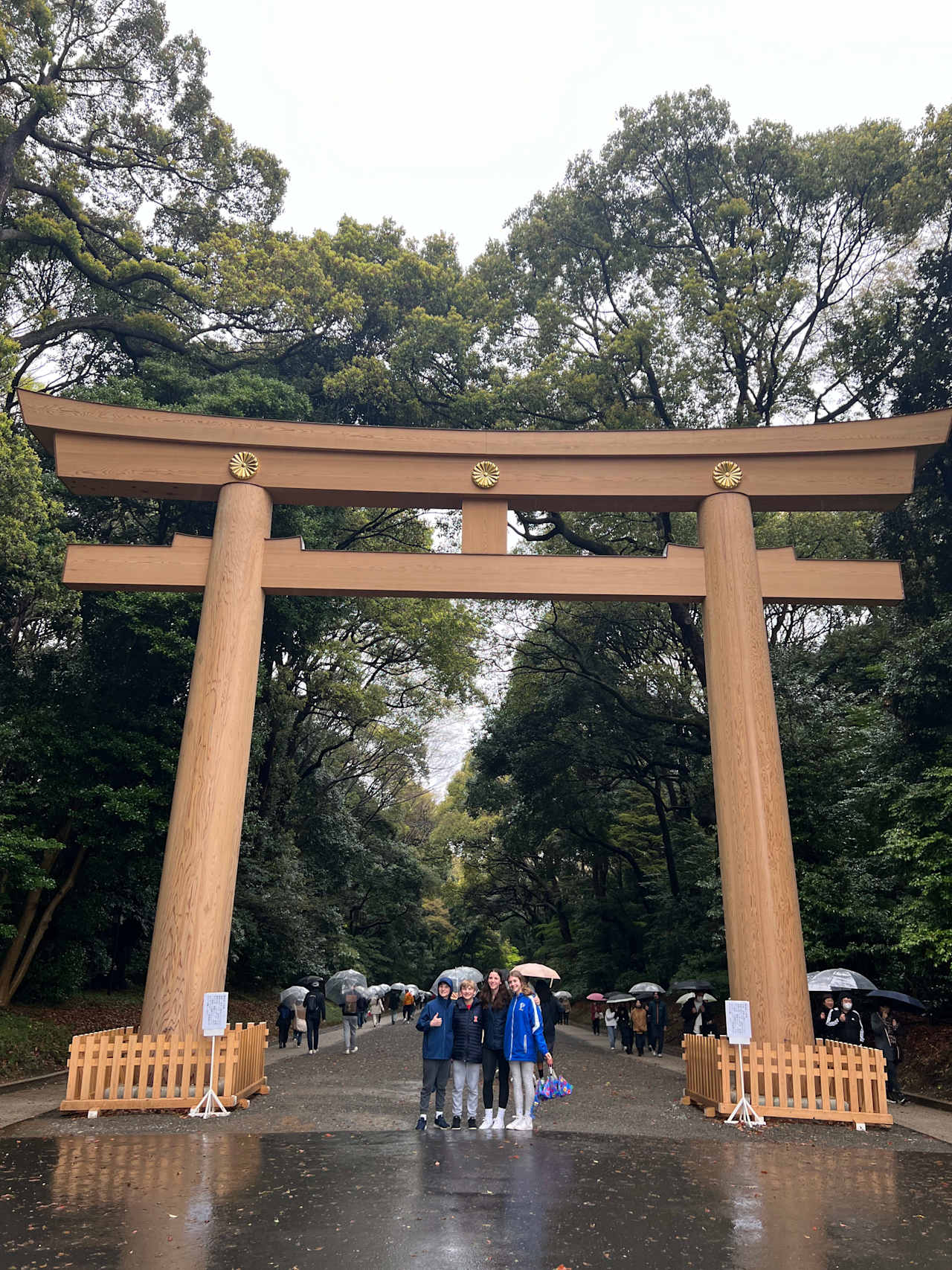
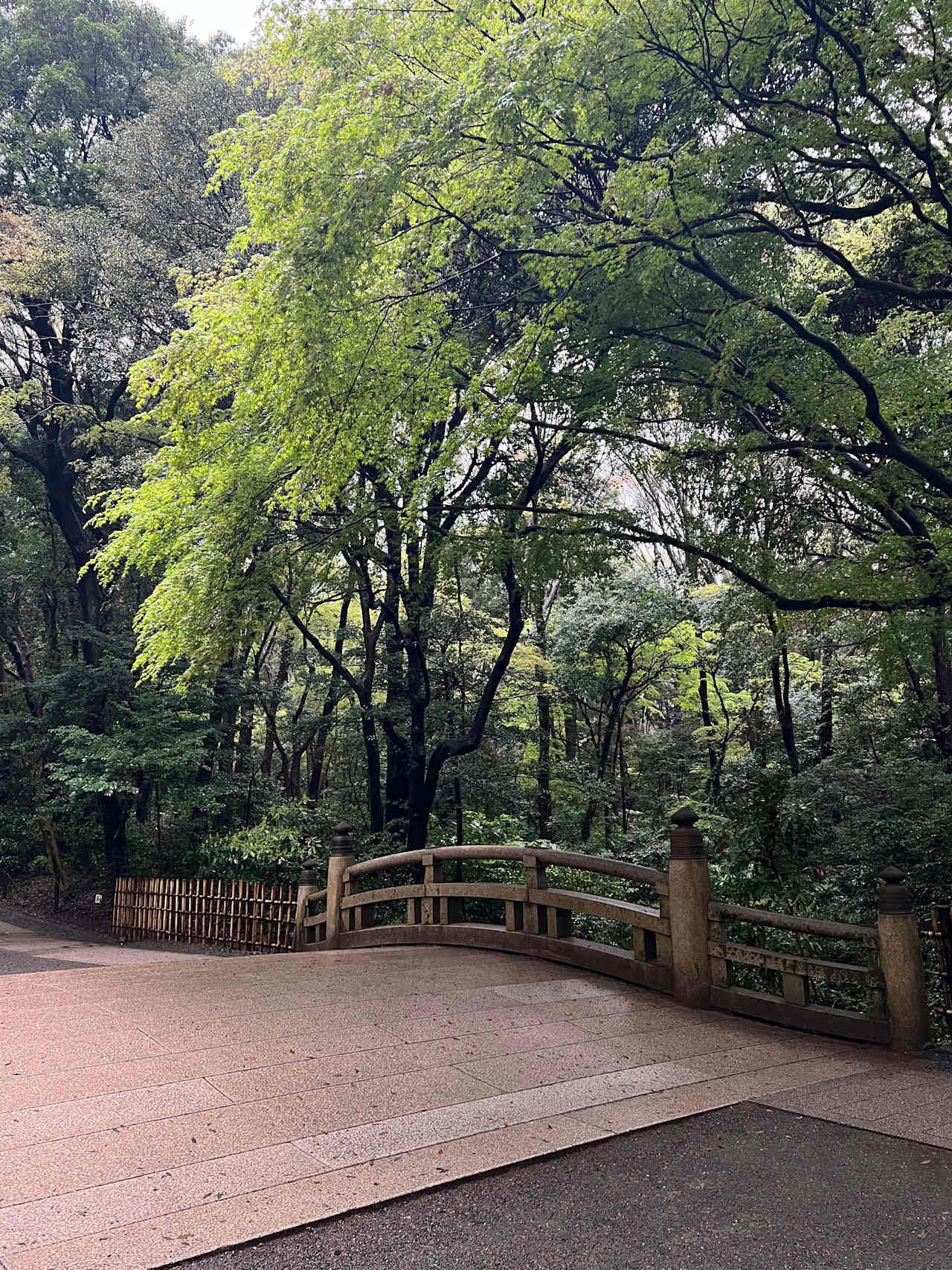
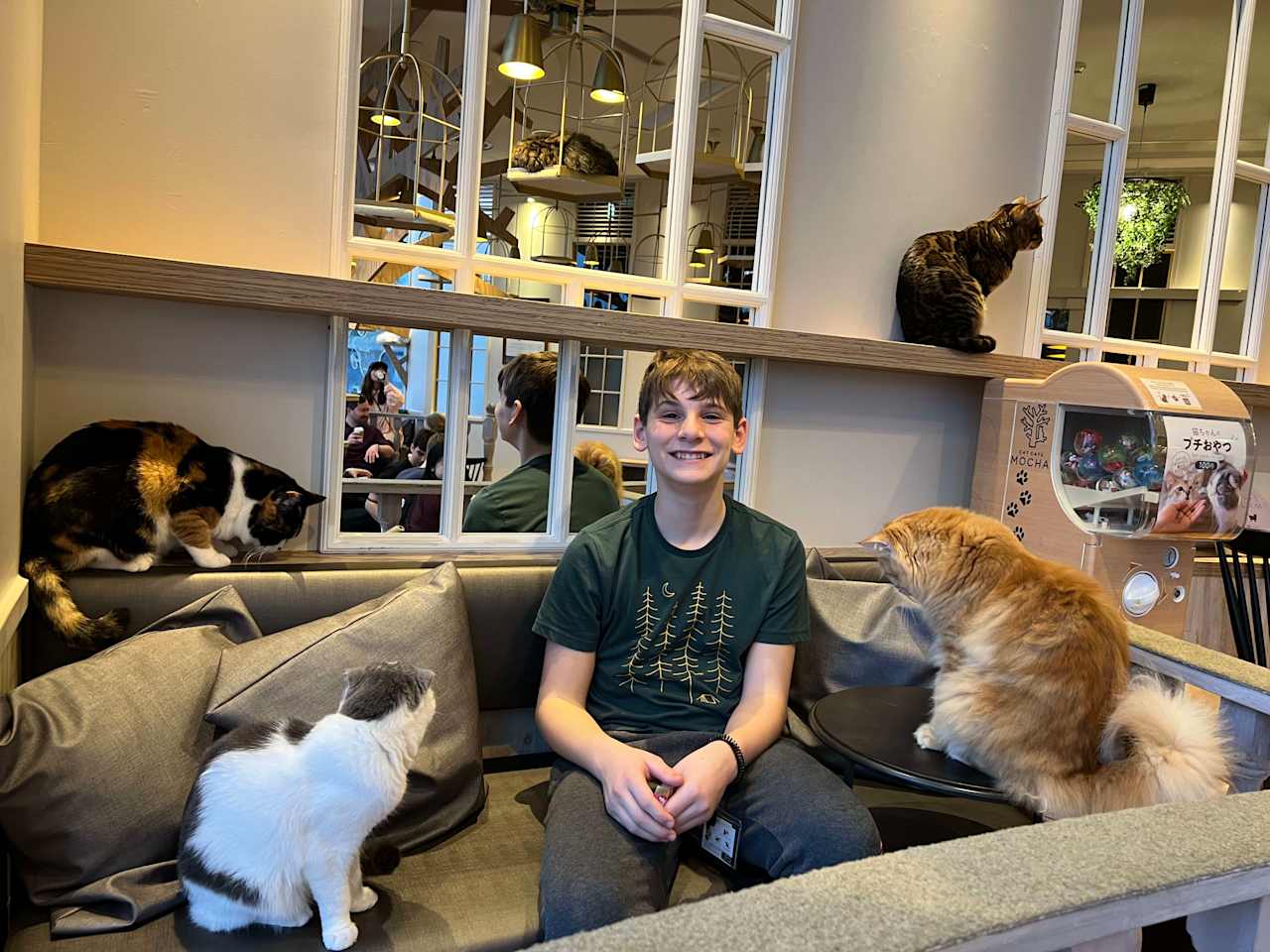
We took a regional train to this town about 60 mins outside of Tokyo. It's known for it's original buildings (almost 500 years old!) in the Kura No Machi (Old Warehouse District) as well as it's gorgeous cherry blossoms and the Matsumoto Soy Sauce factory. We spent the afternoon here and enjoyed checking out an area outside of Tokyo. We were definitely the only Americans in sight. The kids loved the Kashiya Yokocho (Penny Candy Alley). This area is known for the sweet potato and they have prepared it many ways to enjoy in Kawagoe. Here's a link to the tour we took: Link
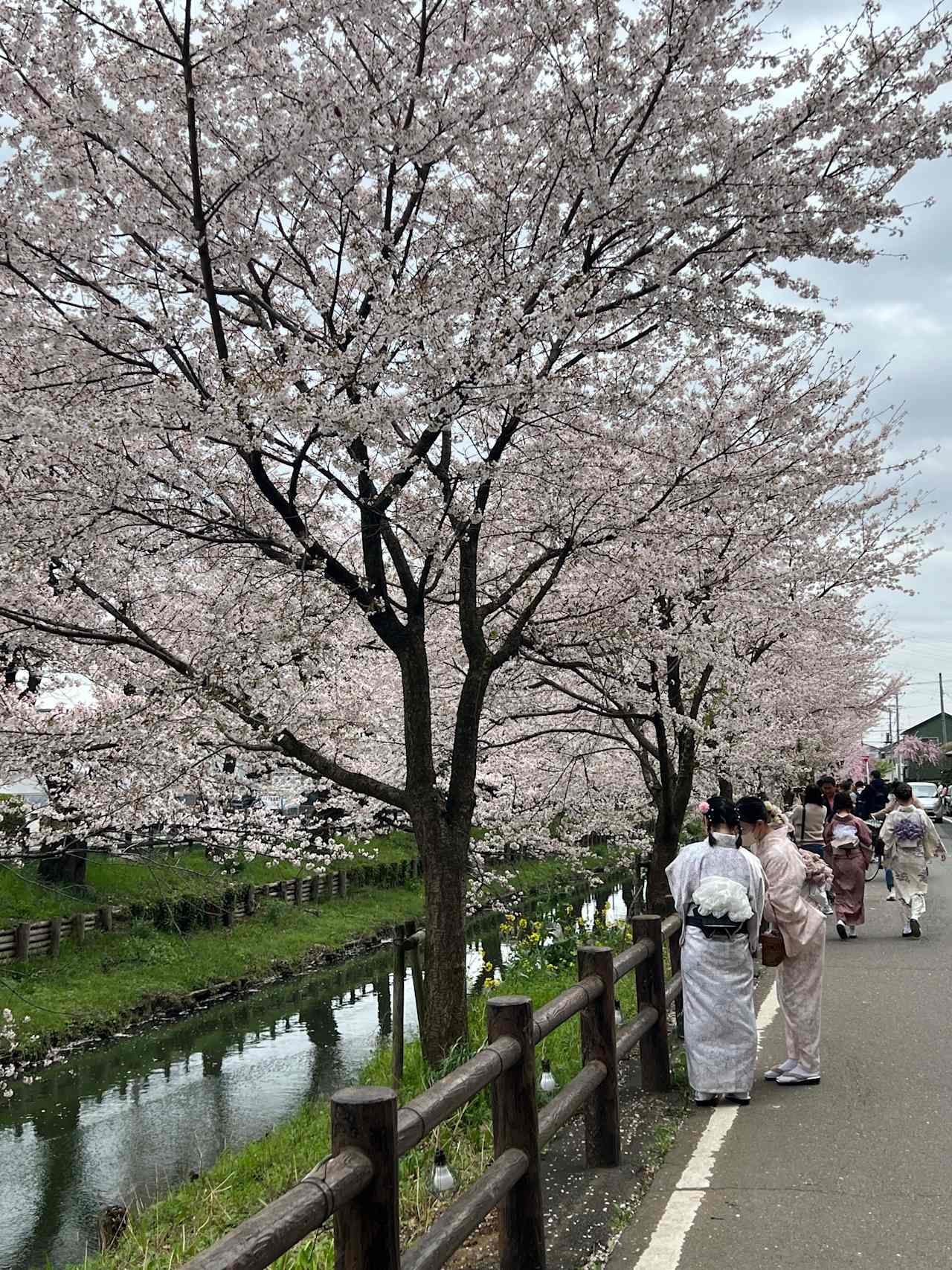
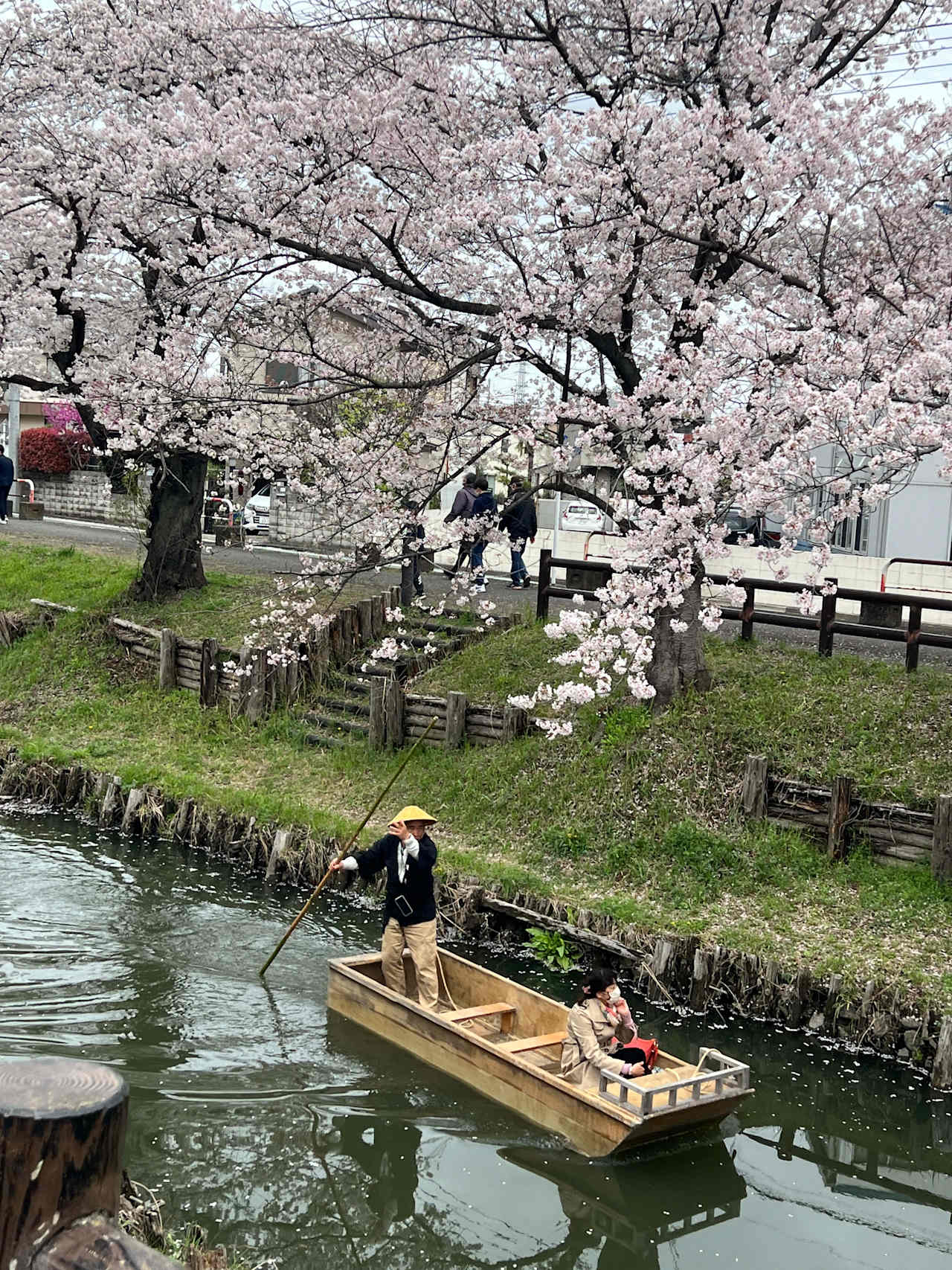
Back in Shibuya, we met our guide for an evening walking Ramen tour. This was one of our kids’ favorite activities of the entire trip. Our guide had incredible knowledge of all things Ramen. We went to three different places and experienced many different types of ramen, including miso, curry, and even unconventional ramen with pesto and squid ink! Highly recommend this tour: Link
Another ‘must do!’ for your time in Tokyo. A museum like nothing you have ever experienced, TeamLab designed a series of rooms to simulate what life could be like on other planets. You are transported into rooms with mirrors on all walls that make you feel as though you are in an endless maze of gorgeous crystals, or laying in a field of flowers or wading through water with playful koi fish. It’s a sensory overload and it’s so cool. We have nothing like it in the US and you should visit if you are in Tokyo. Here's the link: Team Lab Planets
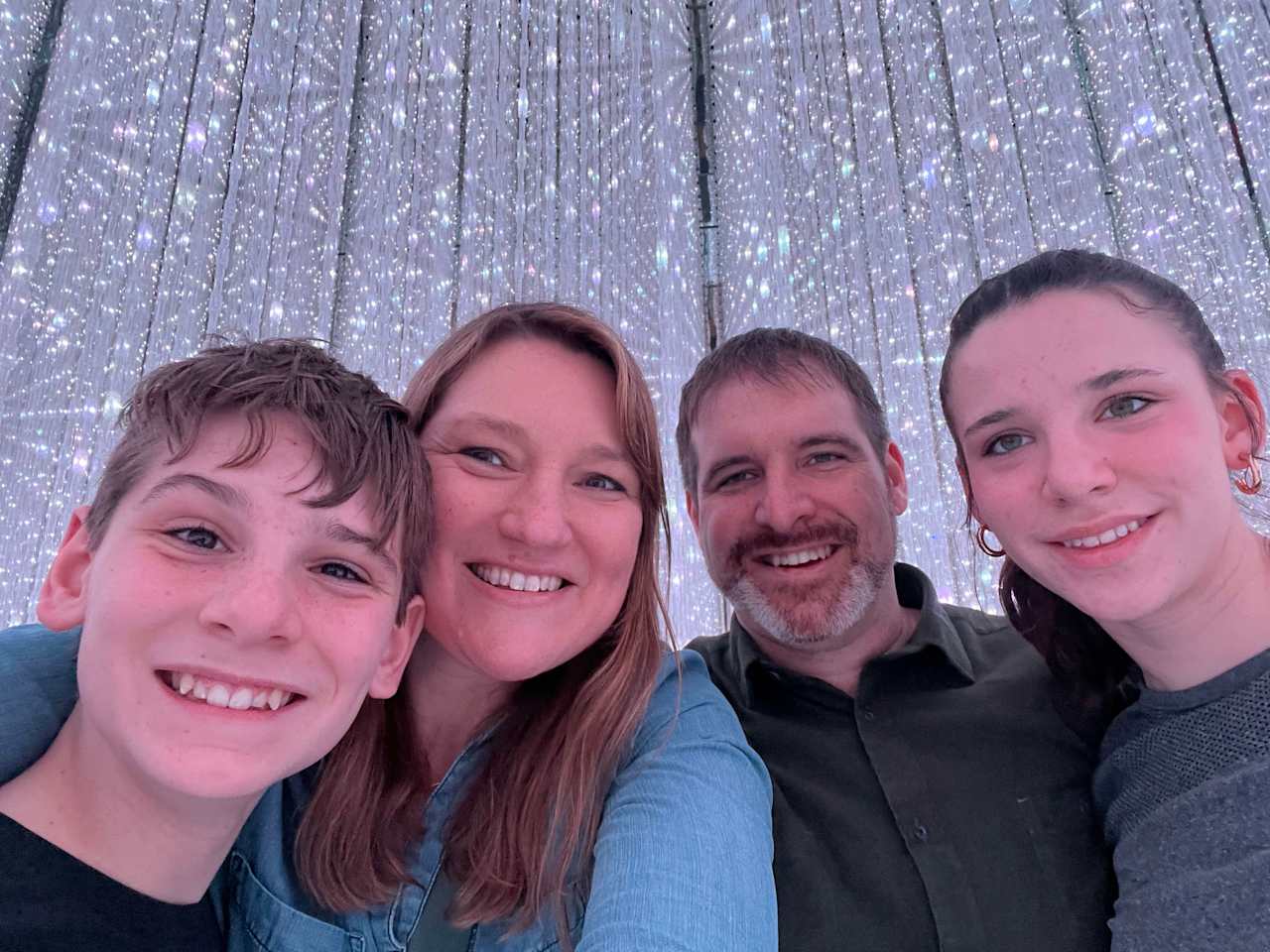
Taking the bullet train in Japan is an experience itself and you should do it! It’s nothing like the movie (sadly no Brad Pitt sightings!) but it gets you to Kyoto from Tokyo in just over 2 hours. For reference, it’s about 300 miles, which would normally take you 5-6 hours. It’s a smooth ride and you get to see the Japanese countryside and may even catch a glimpse of Mt. Fuji!
We stayed in this incredible AirBnB which was perfect for our crew of 8. Filled with sleeping mats, screens for doors, antique wedding kimonos and samuri warrior armor, you can’t help but feel immersed in the culture of Kyoto when you stay in this home.
We took this tour on our first full day of Kyoto and it was excellent for seeing many temples that exist around the Kyoto area. We were told by our guide that there were over 1000 temples in the area! Here are some of the temples we saw on our tour: Motorikyu Nijo Castle, Kinkakujicho Golden Castle, Ryoan -ji Temple, Ginkaku-ji Temple, (amazing Zen rock garden) and Kiyomizu-dera Temple.
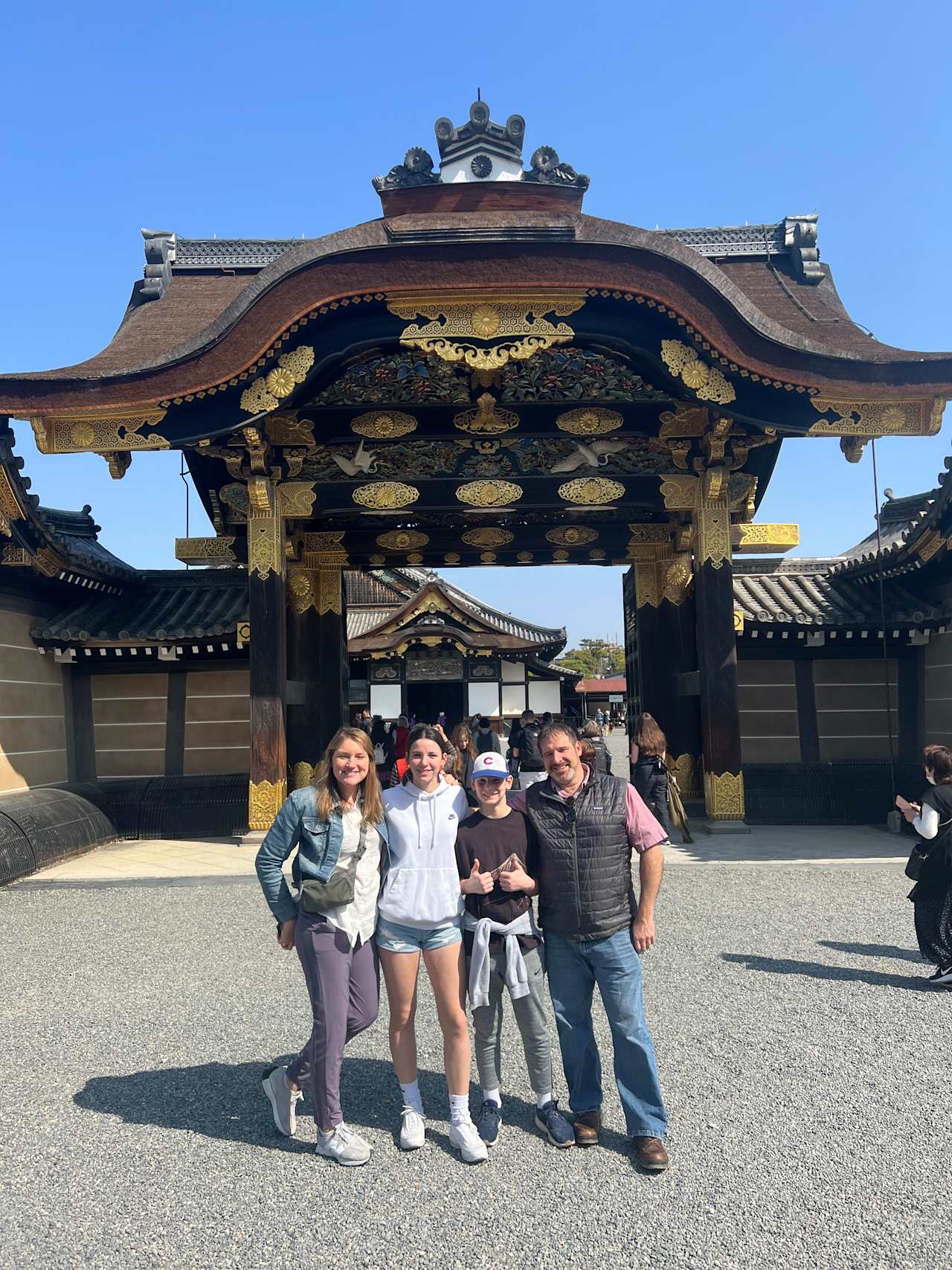
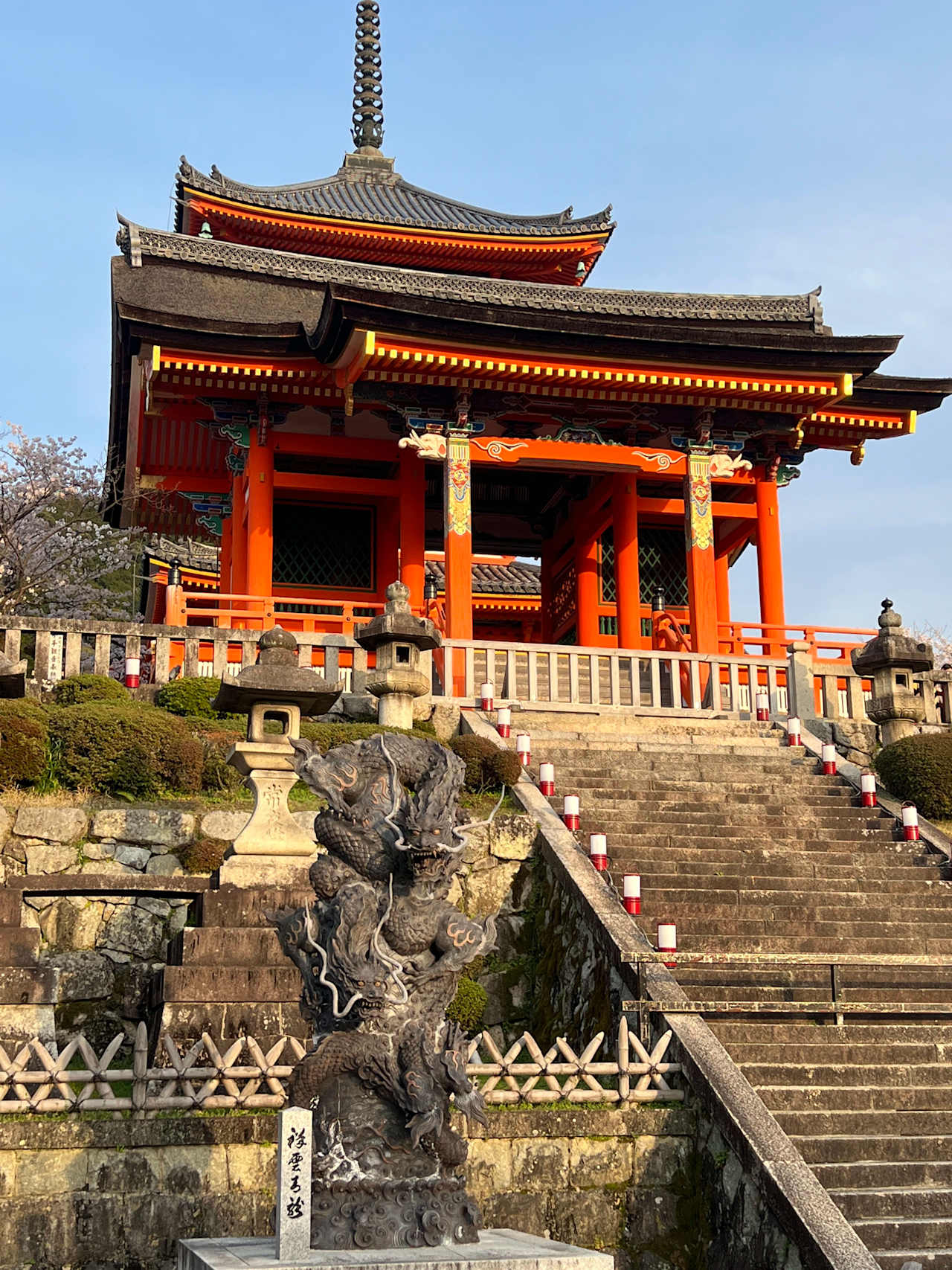
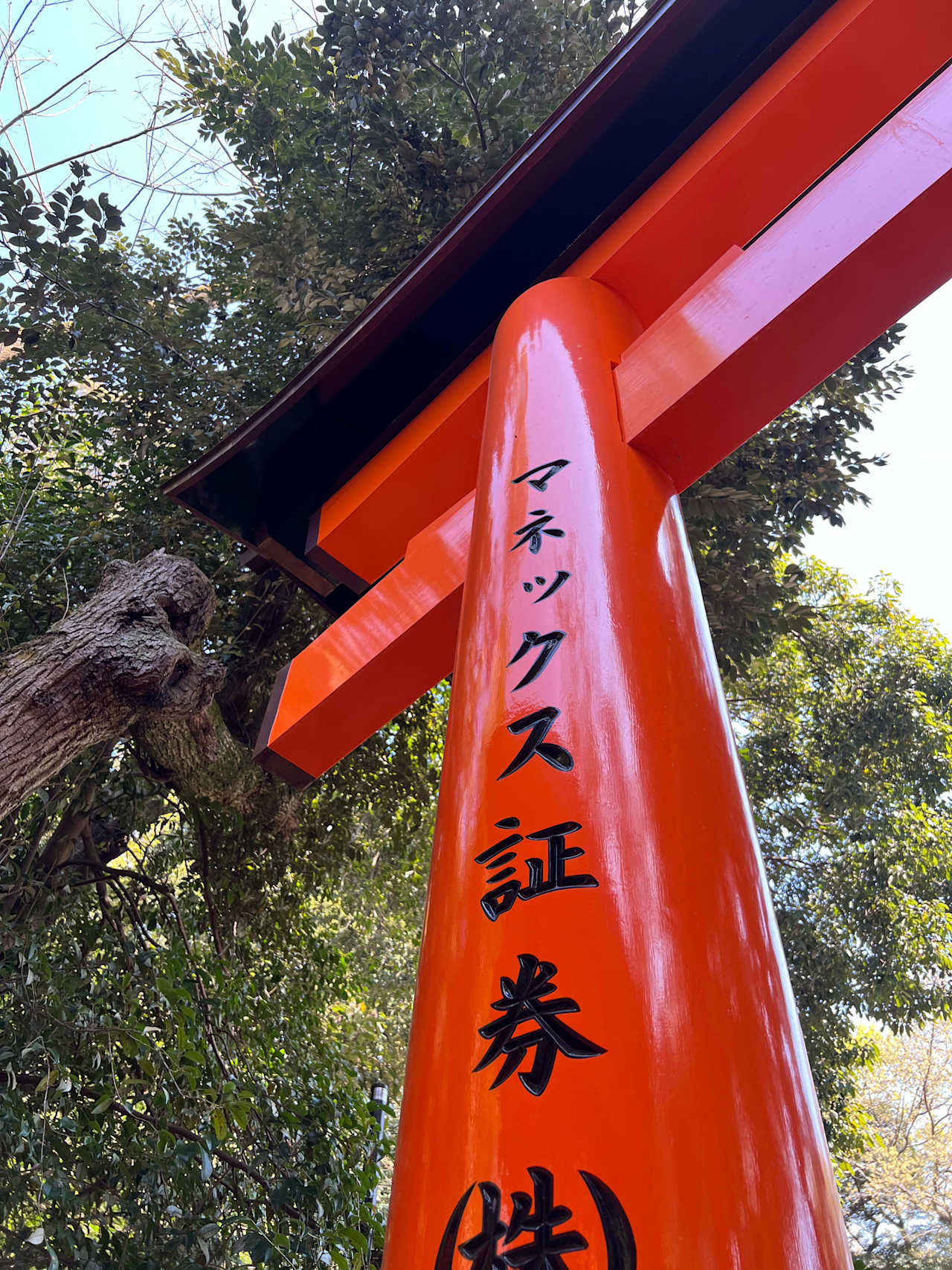
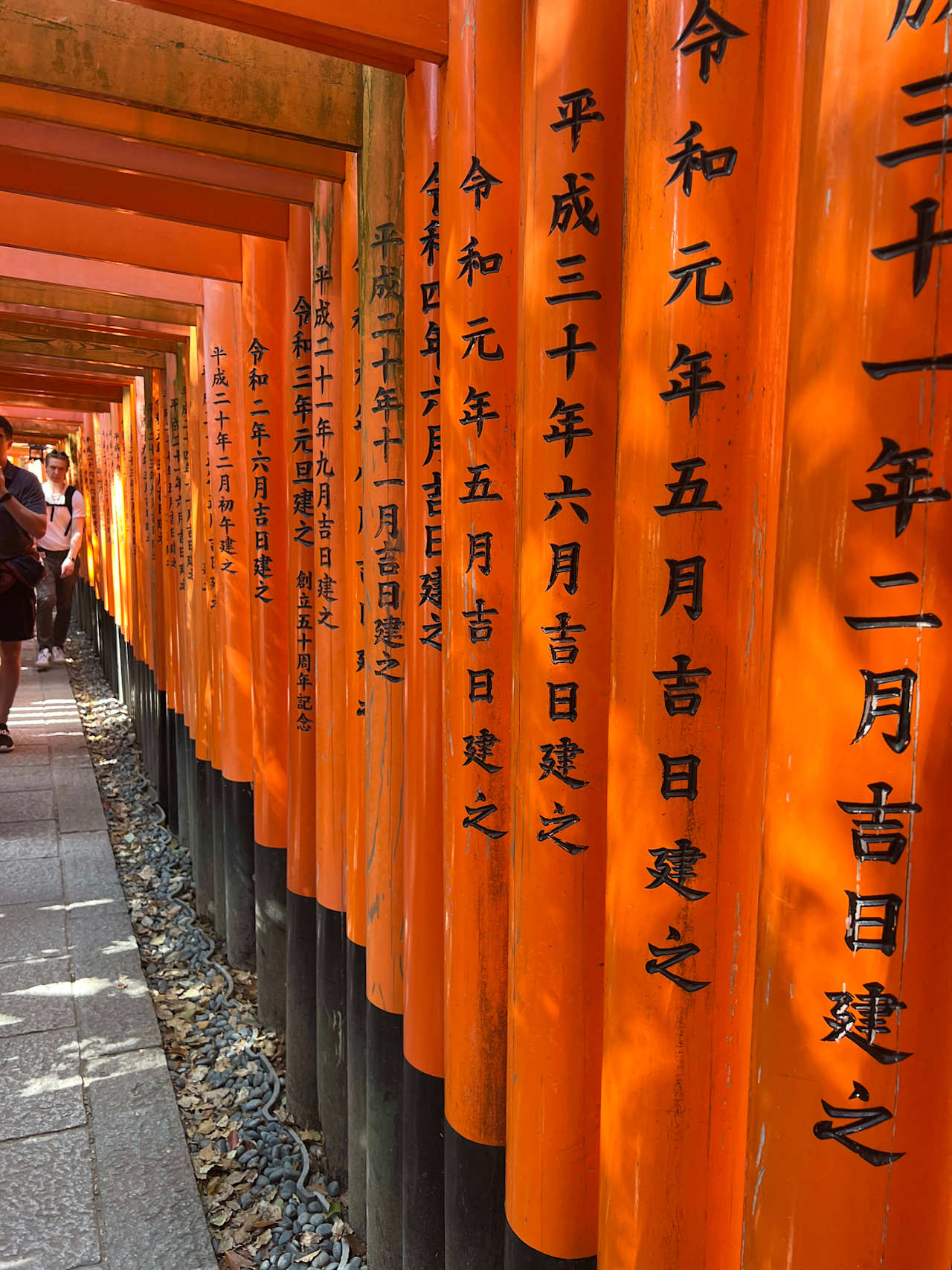
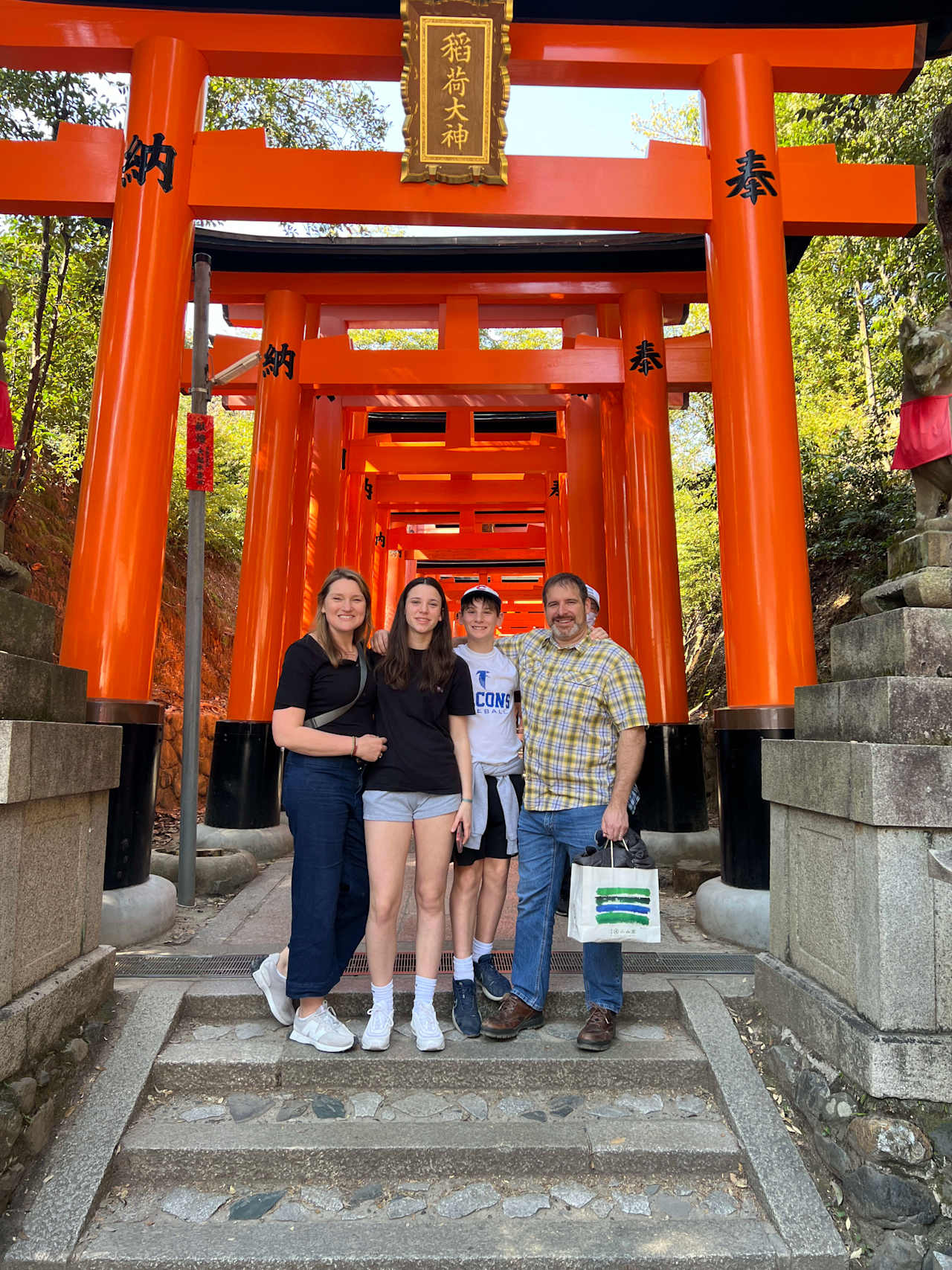
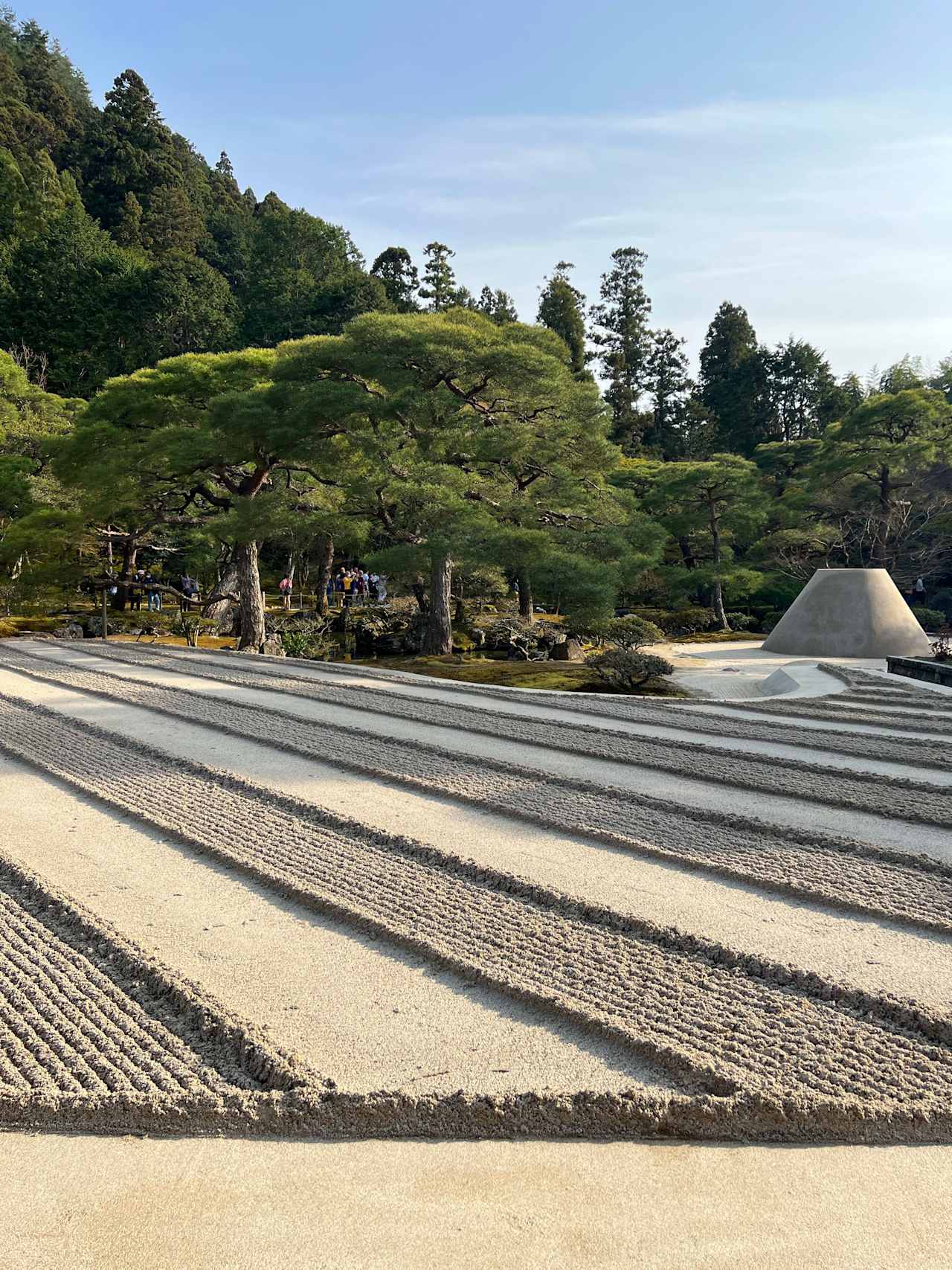
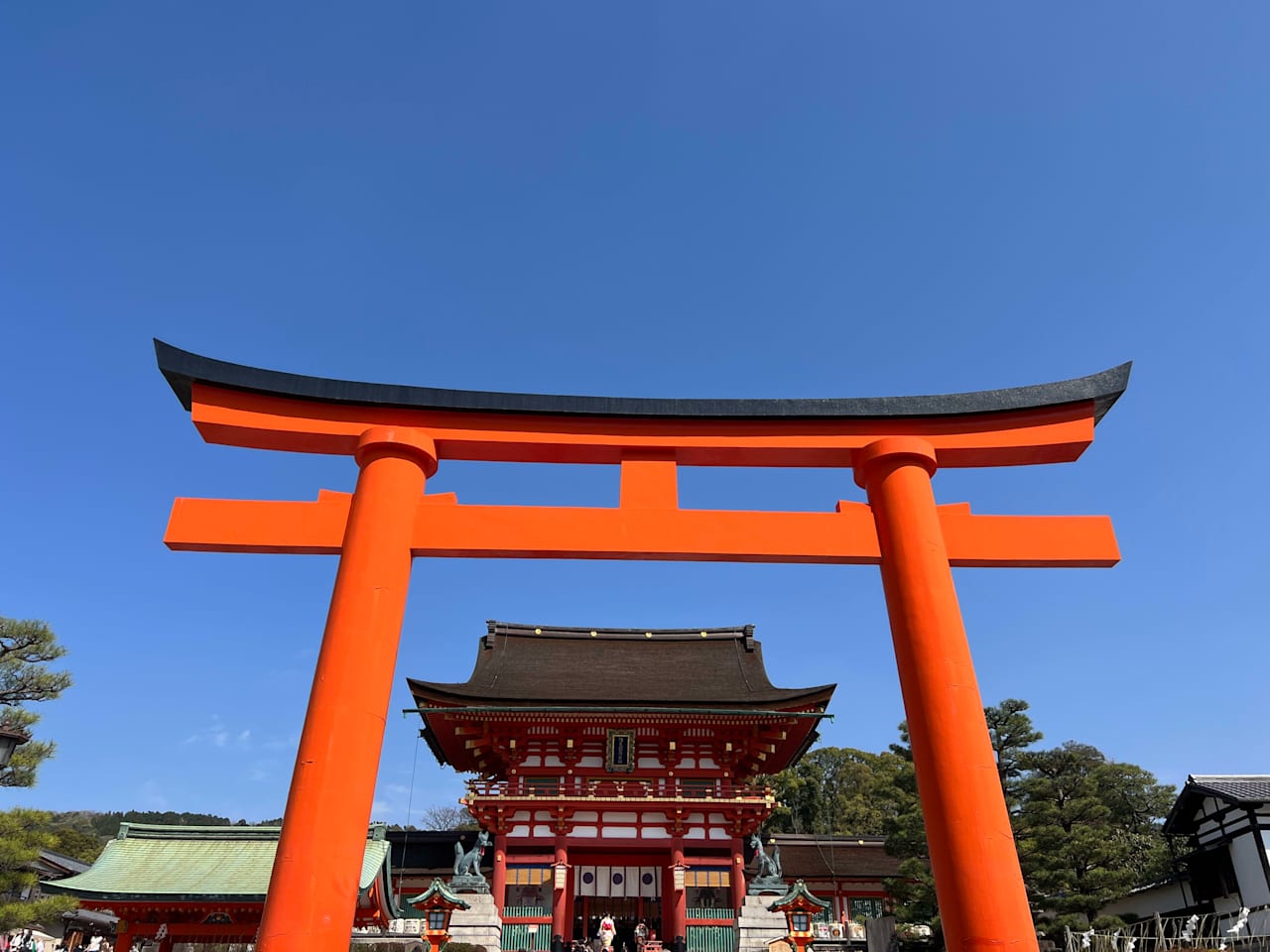
The next day we had a proper tea tasting ceremony in a Japanese Tea house. We each got to take a turn making tea and tasting tea according to ancient Japanese traditions, then we walked a couple of blocks to this adorable tea shop and bought some macha tea to enjoy at home. This made my inner tea nerd happy especially when we got to purchase a legit macha whisk made from bamboo.
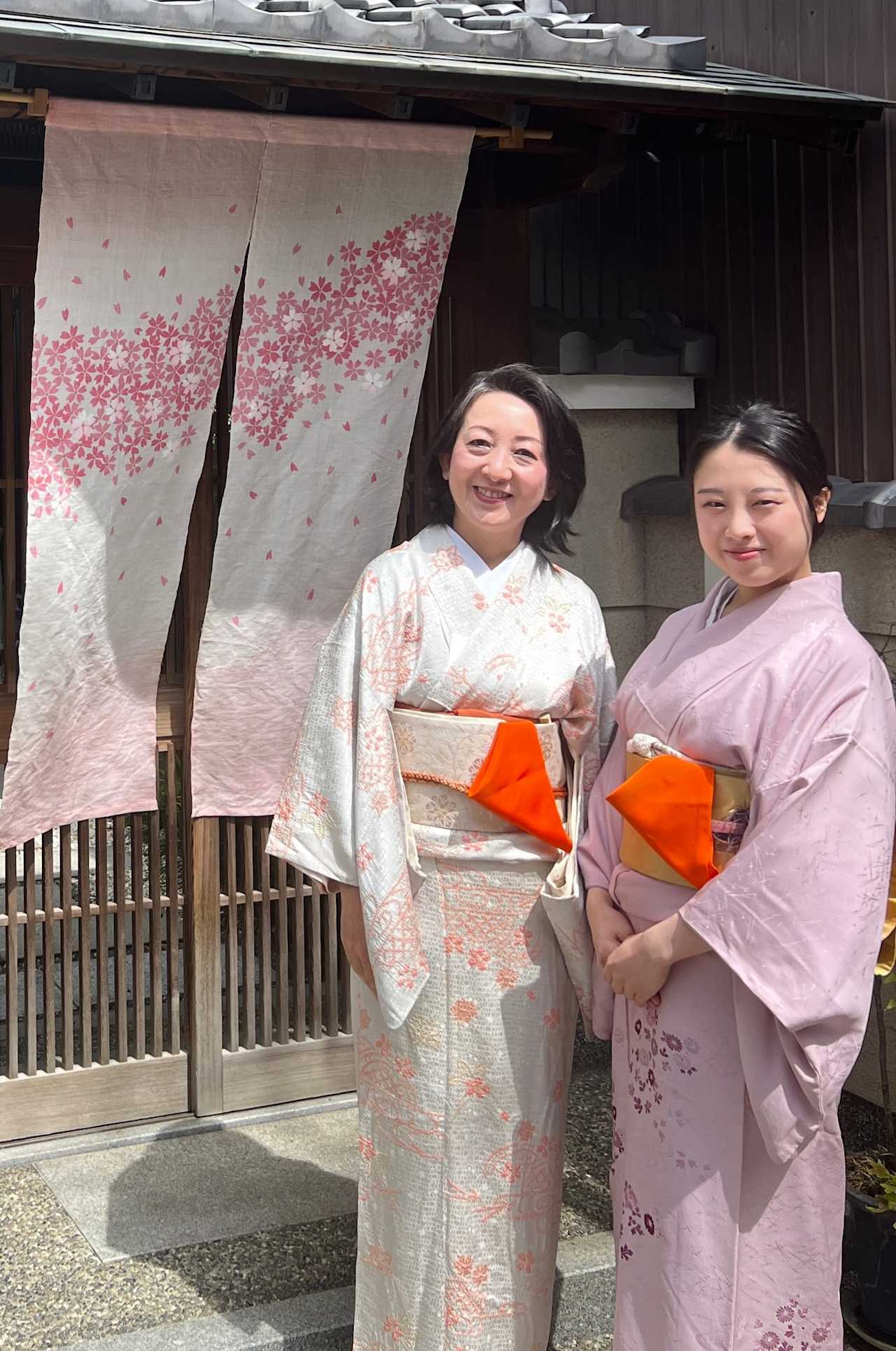
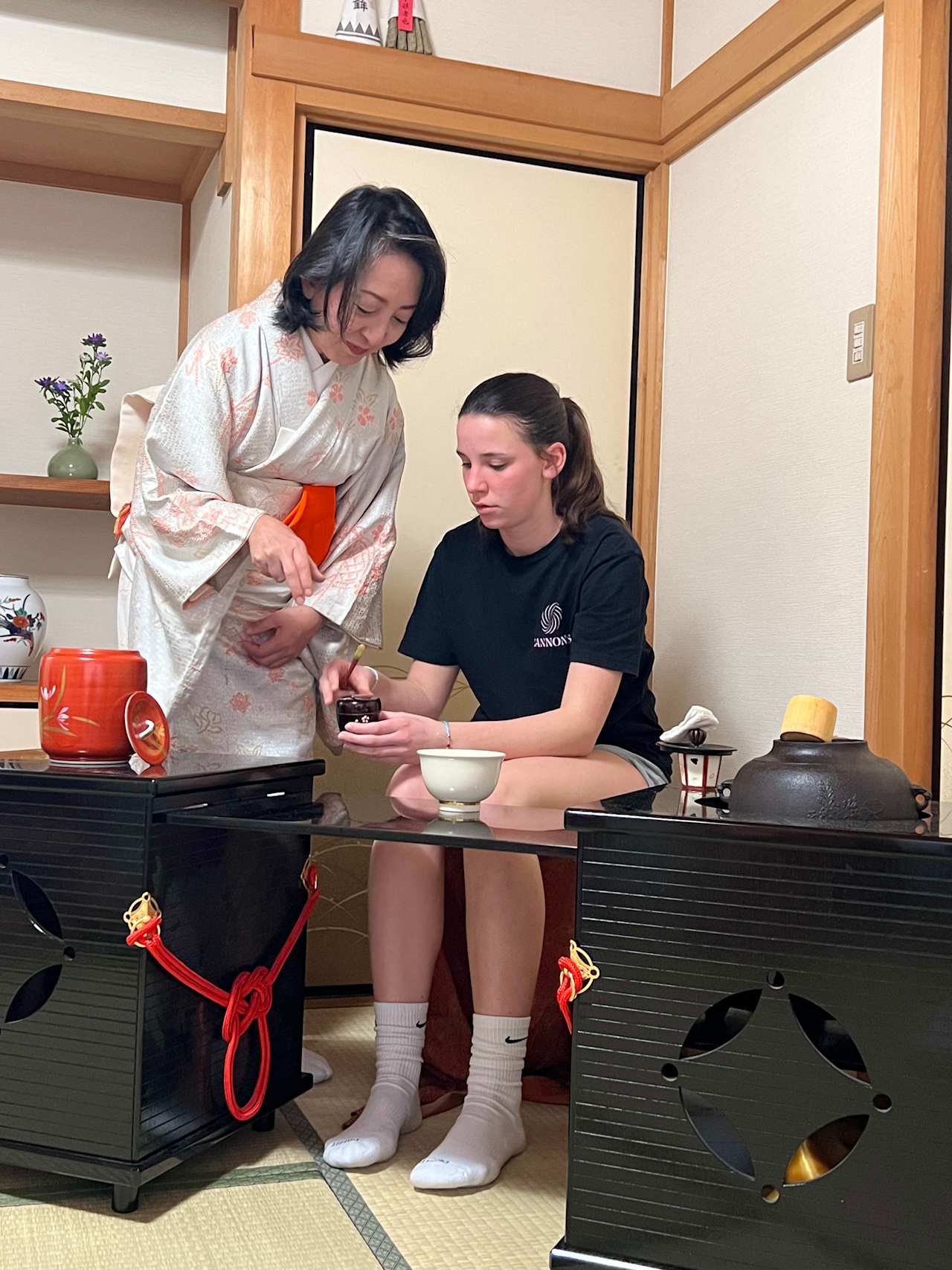
Wrapping up our experience in Kyoto was a Gion Geisha District Nighttime Tour.
Geishas are somewhat mysterious and a very culturally significant part of Japanese history. According to our guide, there used to be over 1000 geishas in Japan. Today, there are maybe 300 Geishas and maikoes (geisha apprentice) and we saw 6-7 on the night of our tour. Geishas are trained in a special geisha house in all the Japanese customs, including playing the shamisen (special Japanese type guitar) pouring tea, dancing, and the art of conversation. They are typically hired as social companionship for Japanese businessmen. Seeing a geisha in person is like catching a glimpse of old world Japan. Their kimonos are beautiful and their hair and makeup is highly ornamental and detailed and like nothing that we have in America.
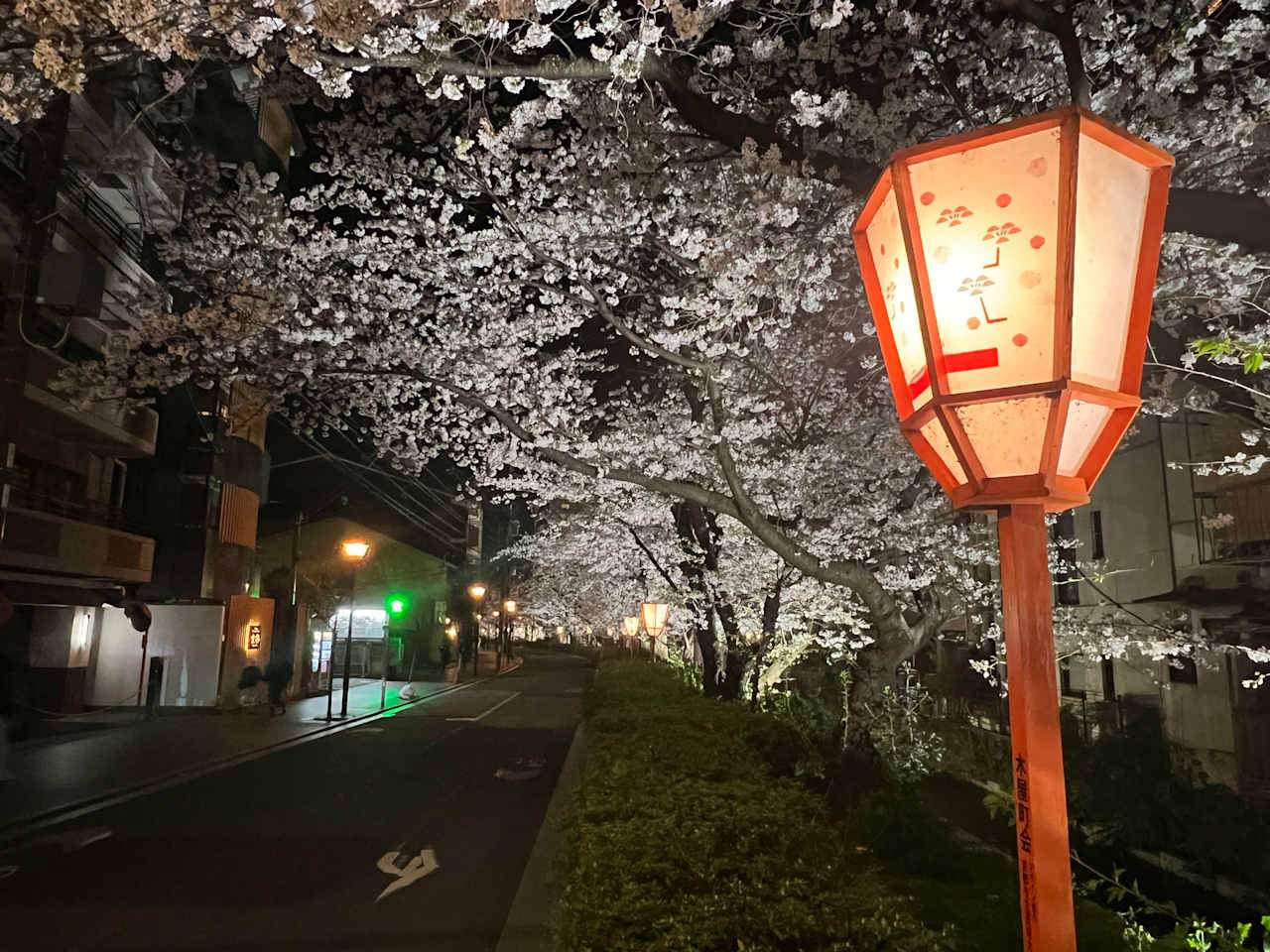
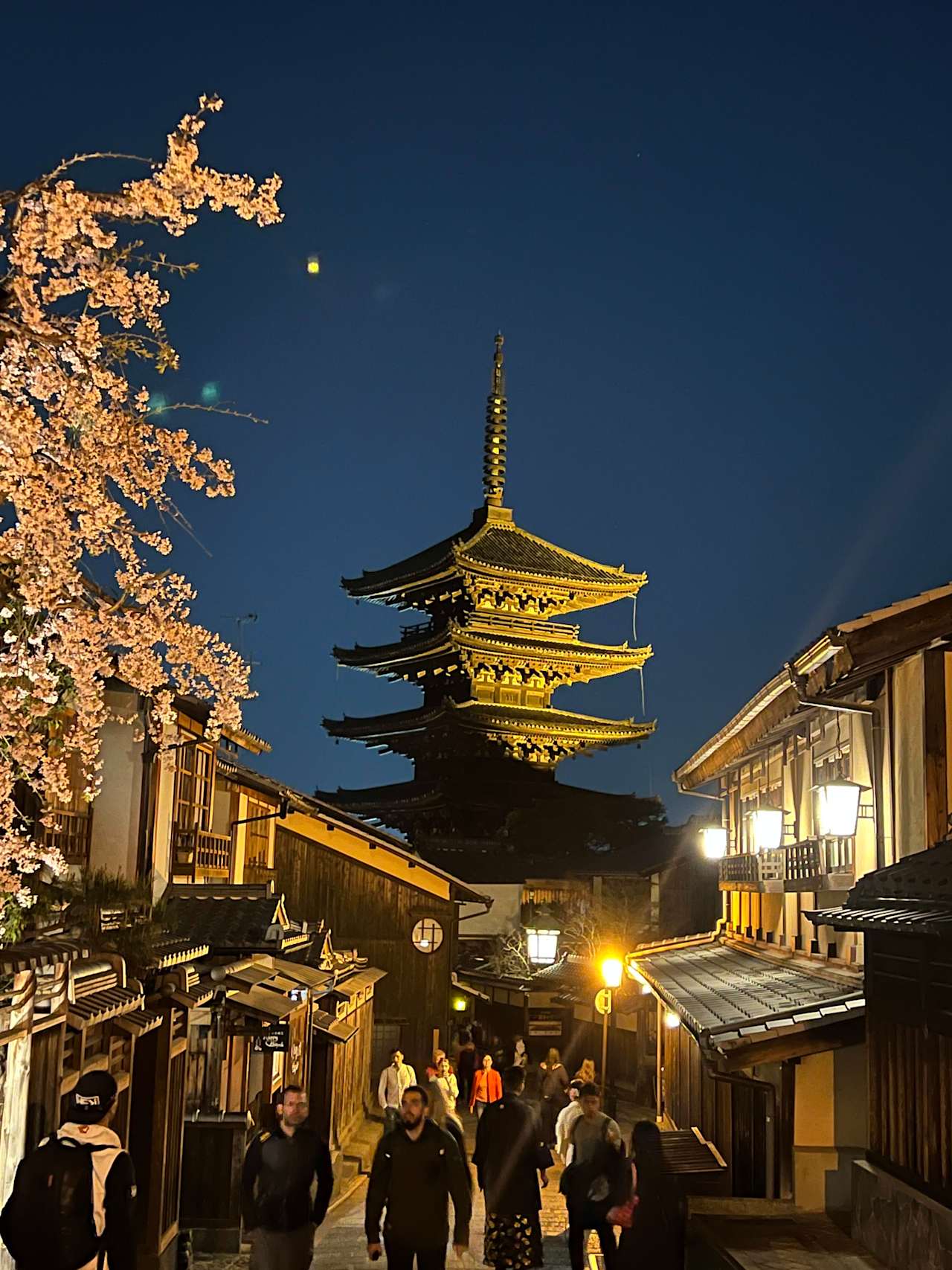
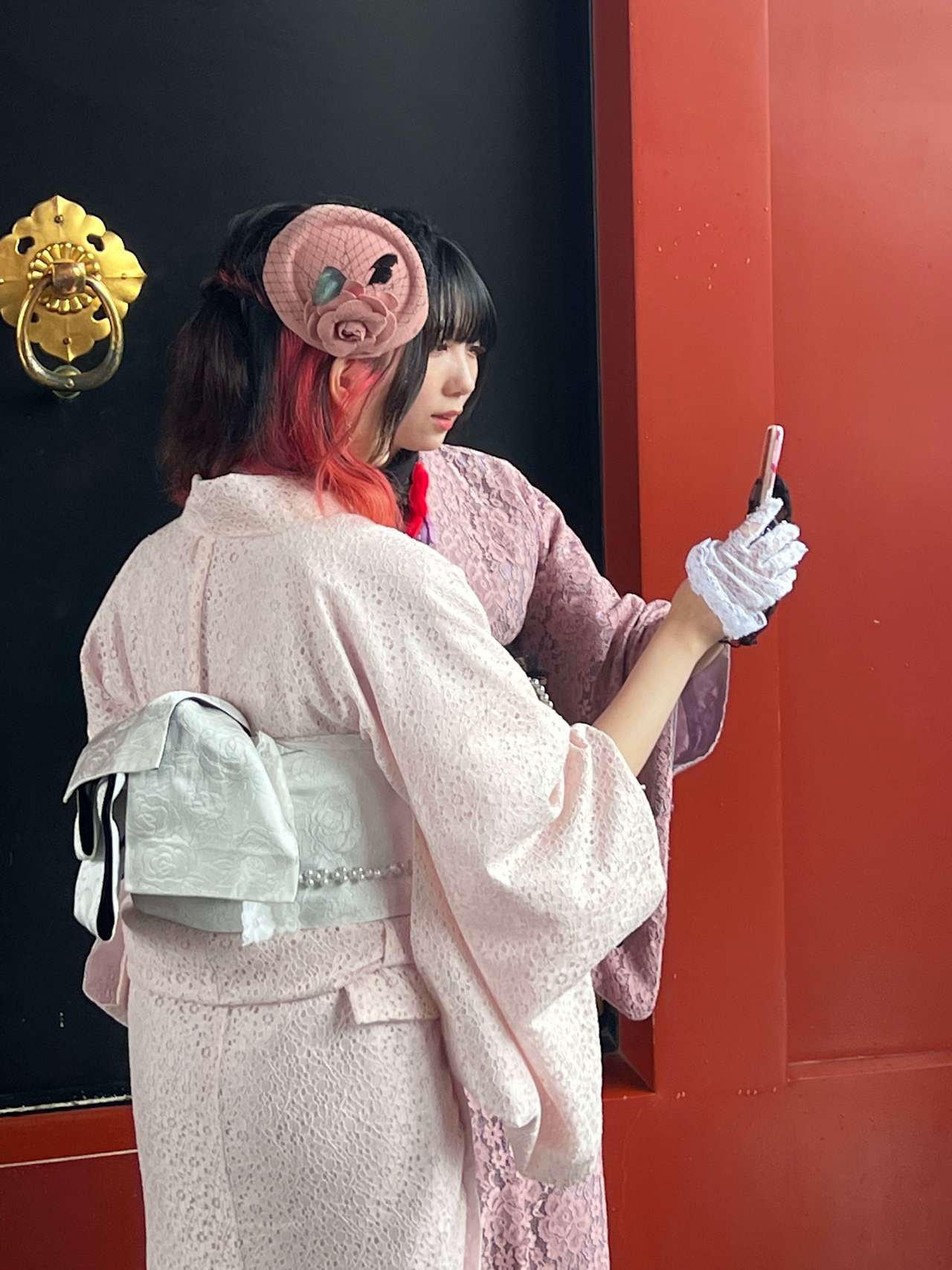
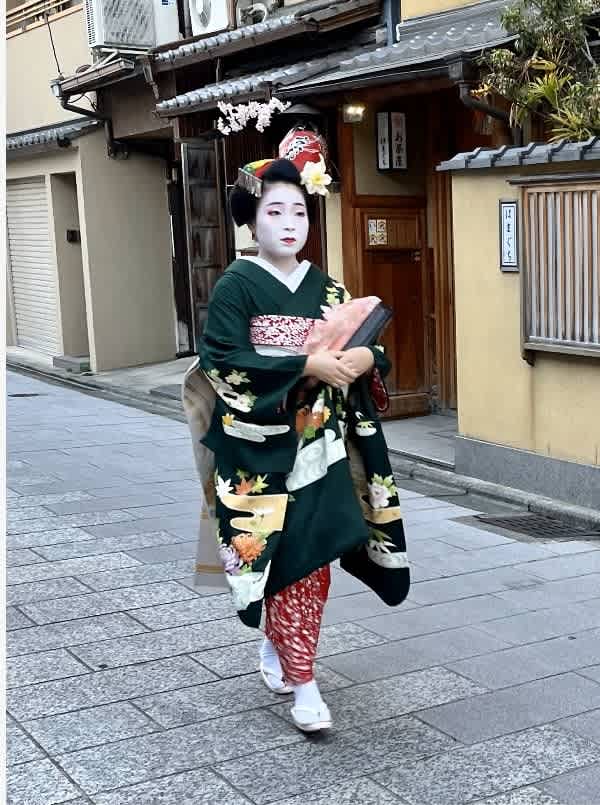
We spent our last day in Osaka. Again, we took a walking tour of the city. We ate Takoyaki (fried squidballs) and took in all the neon in the main city center. We stayed in this hotel which was very well appointed and tiny! We enjoyed the Kuromon Ichiba Market and bought a lot of souvenirs including kives from one of the oldest knife makers in Japan that used to make swords for samuris!
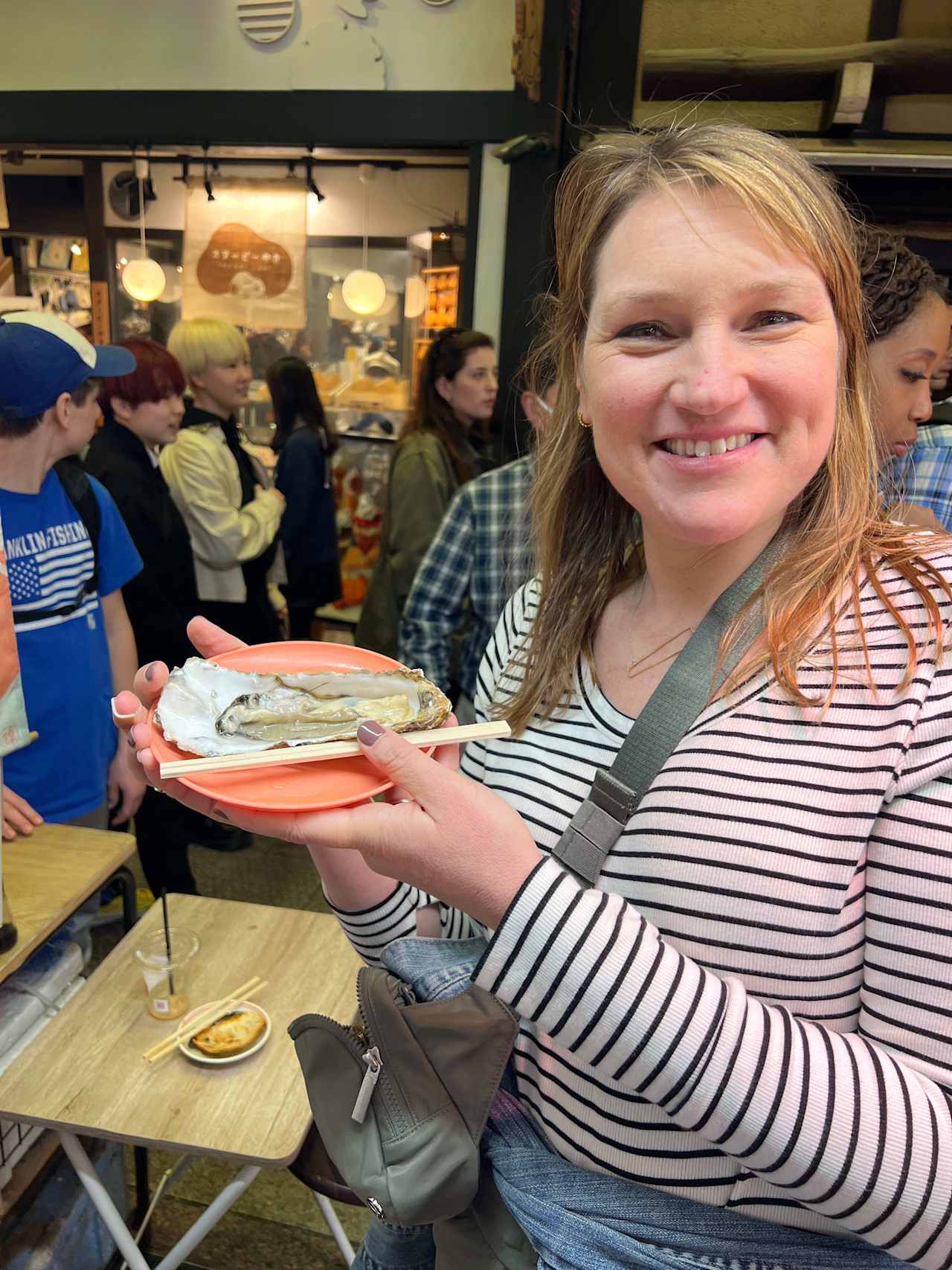
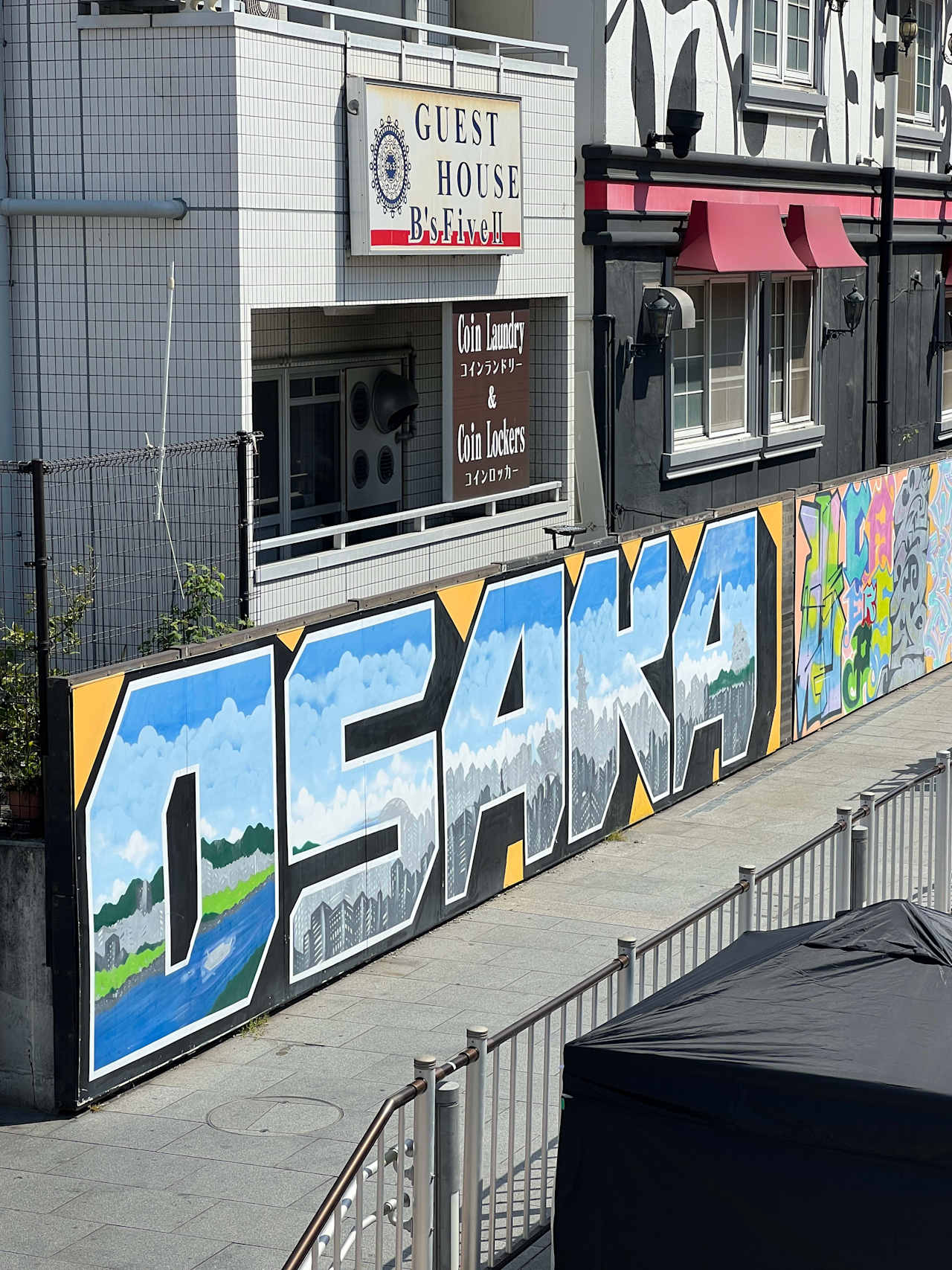
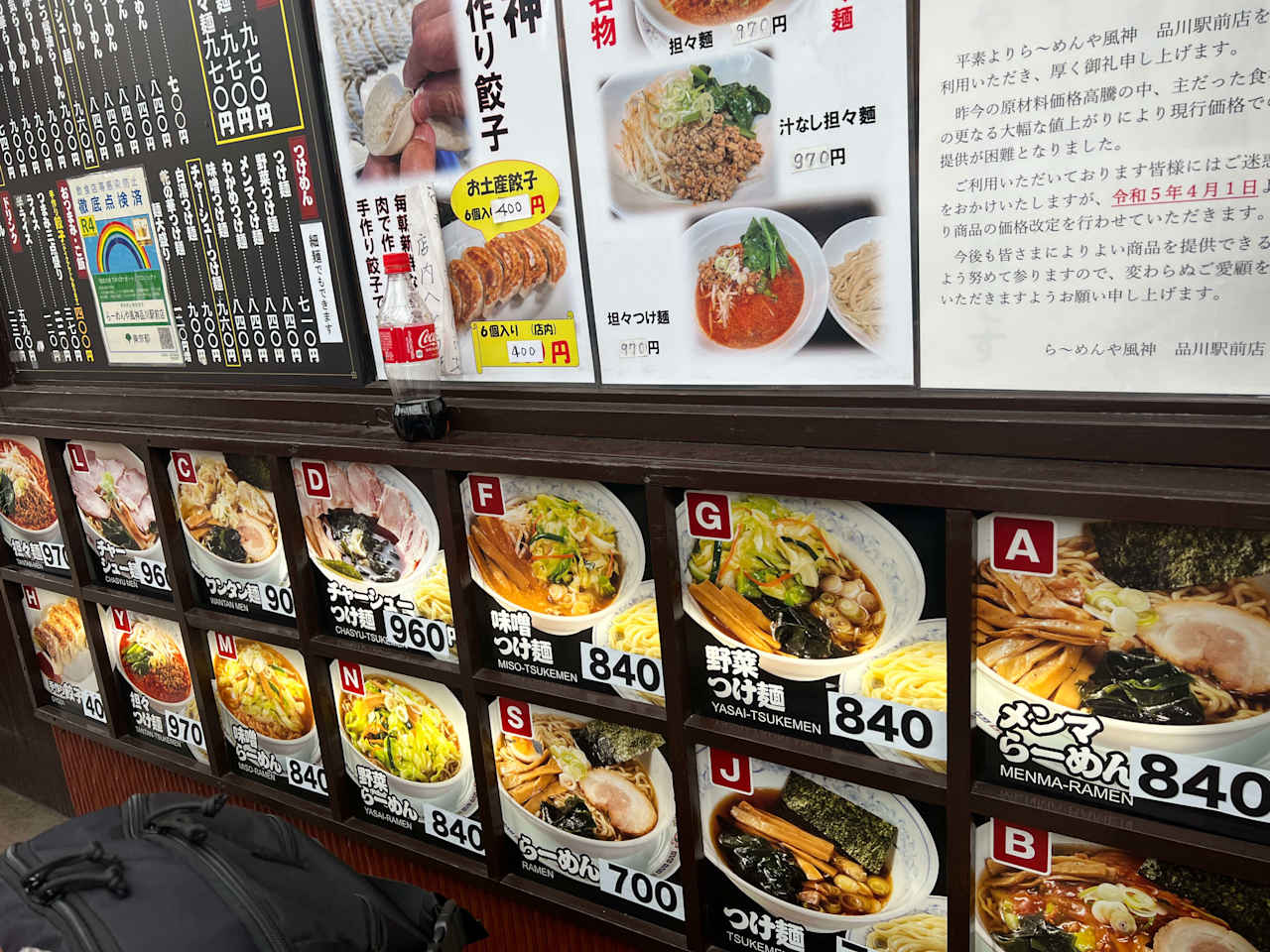
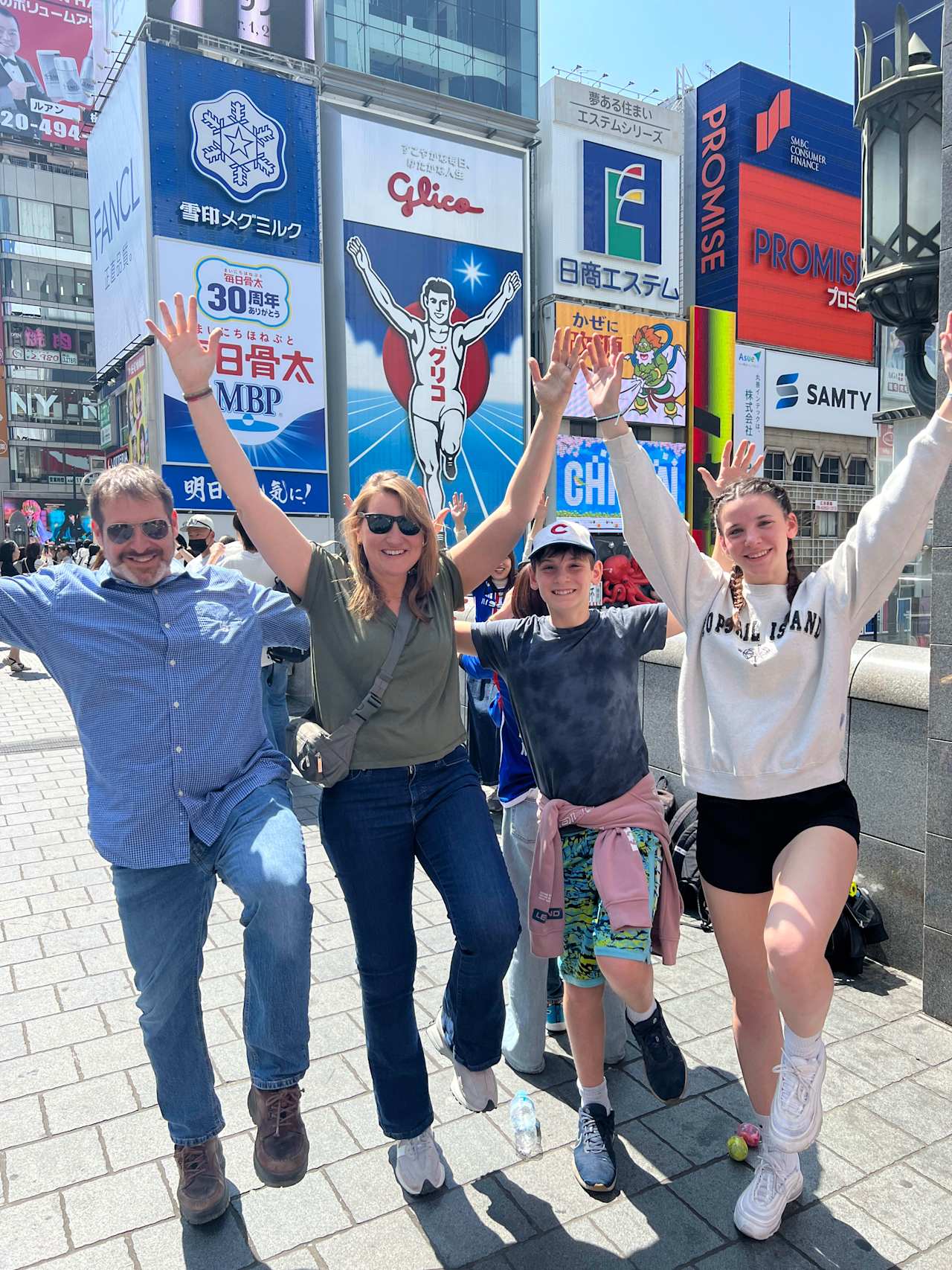
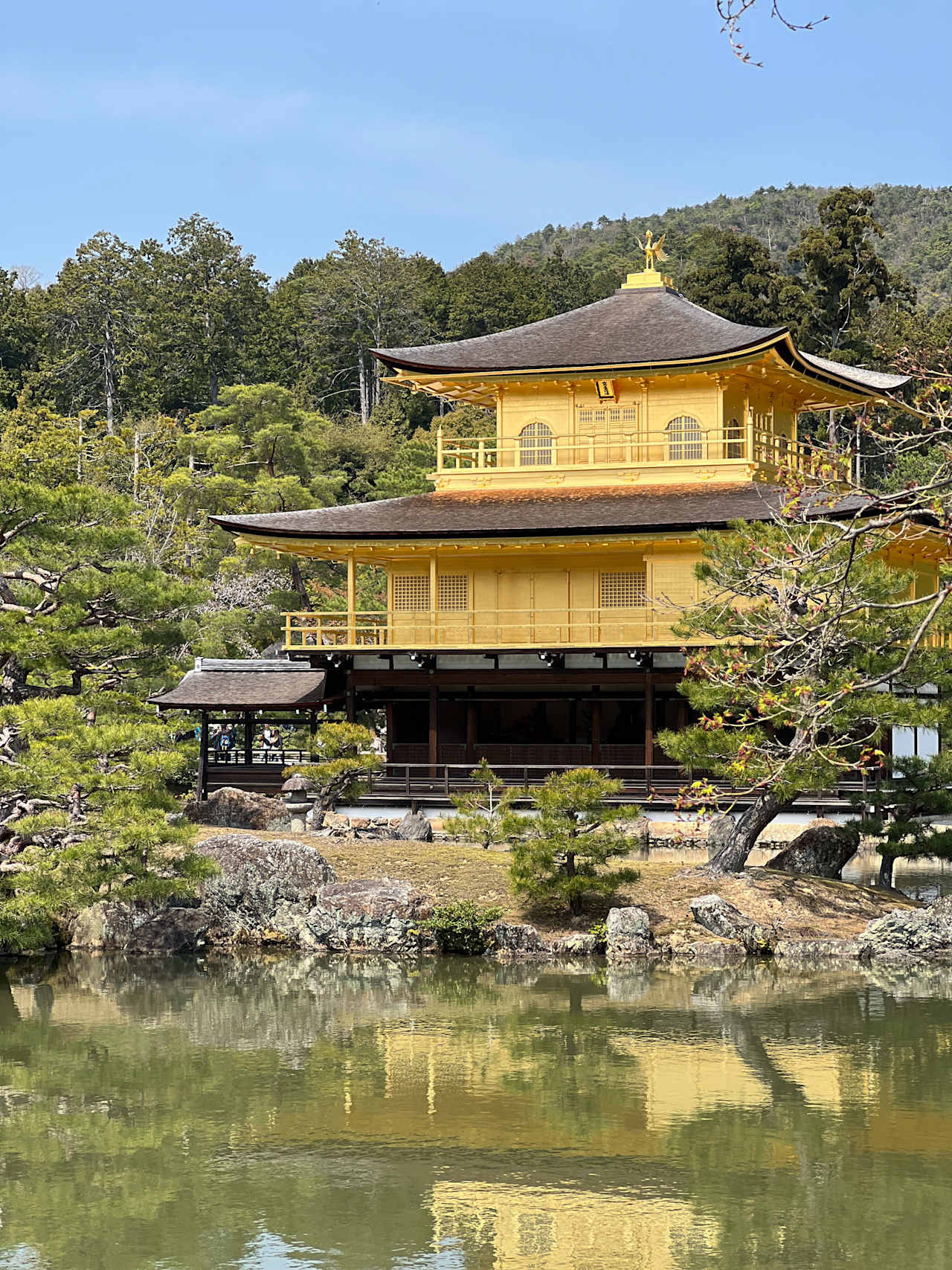
Japanese love the soft, squishy consistency in food. We consistently ate Eeel, Wagyu hibachi style, Sushi (we found a couple fun conveyor belt restaurants), Ramen, Steamed Pork Buns and desserts with Red Bean Paste. They drink sake like Americans drink wine. They like to ‘pair’ it to the meal, as there are many, many variations of sake. We had a cherry blossom type of sake to celebrate the season. They also do not use napkins. They give you a warm washcloth at the beginning of the meal and then you don’t know what to do with it? Do I sit with a hot washcloth on my lap? Does it sit on the table – we never knew?? Most restaurants are small little stalls with limited seating. Upon entering, you buy a ticket for the meal you’d like to order and then hand the ticket to the chef or wait staff. They love vending machines and this is another example of how they use them.
We found the the Japanese people were not too big on breakfast. We knew before traveling that 7-11 and Lawson’s were much bigger and had better offerings than the US. We made a habit of visiting these convenience stores at night so the kids could pick out breakfast the next day. They offer everything from beer, ramen, pastries, fruit, ice cream, waffles and the famous egg salad sandwich!
The Japanese people are incredibly polite, quiet, respectful people. We took the trains everywhere and couldn’t get over how many trains were available, how punctual they were and how quiet the people are while riding the trains.
Japanese people dress quite conservatively in muted tones. We saw many trench coats (maybe because it was raining a lot?) and women frequently wear pleated skirts in plain colors. They don’t wear many colors or patters and are very well put together – think high quality clothes, beautiful shoes and polished hair and makeup. The men wear suits and ties to work and it is common for them to work up to 70-80 hours a week. Teenagers were wearing lots of neon and platform shoes/boots with tights. They do not wear crop tops or holy clothes/jeans and definitely no sweatpants in public. Sweater vests were really popular as well. When traveling to Japan, wear comfortable shoes that you can take on and off easily. It is required to take off shoes in temples and nicer restaurants or tea houses. The hostess arranges your shoes for you upon leaving – very thoughtful and sweet.
It is incredibly clean everywhere in Japan. This is especially noticed on the train and streets. They do not eat or drink on the go which helps to keep everything clean. There are no garbage cans on the streets so you end up carrying your garbage with you as you go. It’s a big deal when you find a garbage can. ‘Found One!’ – it was like a scavenger hunt when someone in our group spotted one.
It is also very safe in Japan. Theft is very low. In fact, we saw nice e-bikes on the street that were not even locked up on a regular basis. We never saw any homeless people in any of the train stations or cities where we traveled and nobody asked us for money. How refreshing!
Karoke - It's a real thing! It seemed like Japanese of all ages loved Karoke and we did it a couple of times and it was memorable. Basically, you pay a flat fee to rent a karoke room with a screen and microphone. You can order beer and soda was free. The karoke bars are huge centers with many rooms (over 50) so they are readily available. The kids loved watching their parents belt out a little Guns & Roses and the like… so many funny memories in the Karoke Bars!
Many young people in Japan love dressing up like a Geisha and taking photos in the temples and famous places in Japan. They are not ‘real’ Geishas. We asked a couple of guides about this and they said it’s becoming very popular as younger Japanese people love dressing up and taking photos for good old Instagram.
Before we left home we did purchase JR Rail passes. They did save money for regional travel but they were a bit cumbersome to redeem as we had to find specific JR Service centers to redeem the pass. Overall worth purchasing these passes but just know that the train stations are huge and there was a learning curve to know where the correct service stations were located to use the pass.
If you can go to Japan in the Spring, the cherry blossoms (Sakura) are breathtaking. We have nothing like it in the US and they are a sight to been seen! The Sakura is a national treasure for the Japanese. It’s in everything from food, sake, soap and there are Sakura festivals everywhere.
Because Japan was so isolated for so many years, the culture is so distinct and different any other country I’ve traveled. I’m a firm believer that it’s so good to get out of your comfort zone to see how others live, work, eat and enjoy life. As any great trip, we’ve come home with some new perspective and different ideas about how to go about our daily life. Thanks for reading on and I hope this has been helpful to you. Arigato!
Set up a consultation to meet with me to discuss your real estate goals. I look forward to meeting with you!
Contact Today